Last month we spent two weeks in Slovakia. We agreed with my cousin that we would stay at her place on the way to the eastern part of the country. We didn't see her in a long time, and we were excited to spend some time with her and her family. I looked for some places close to their home that we could visit with them. At the end, one of her children got sick, so it was only me and my husband. Frankly, I didn't mind as it would have been crazy with three kids.
There were various options, and we decided to visit a castle - what a surprise, right? 🙂 Honestly, I haven't heard of the Budatín castle before, and I was excited to see it. When we arrived in the area we were surprised to see how majestic this castle is. I thought that we visited all great castles in Slovakia before, but I was wrong.

Budatín castle is located near Žilina which is the center of the region. We pass by it every time we drive to my hometown, but it is hidden between large trees in a castle park, so we didn't see from the road before.
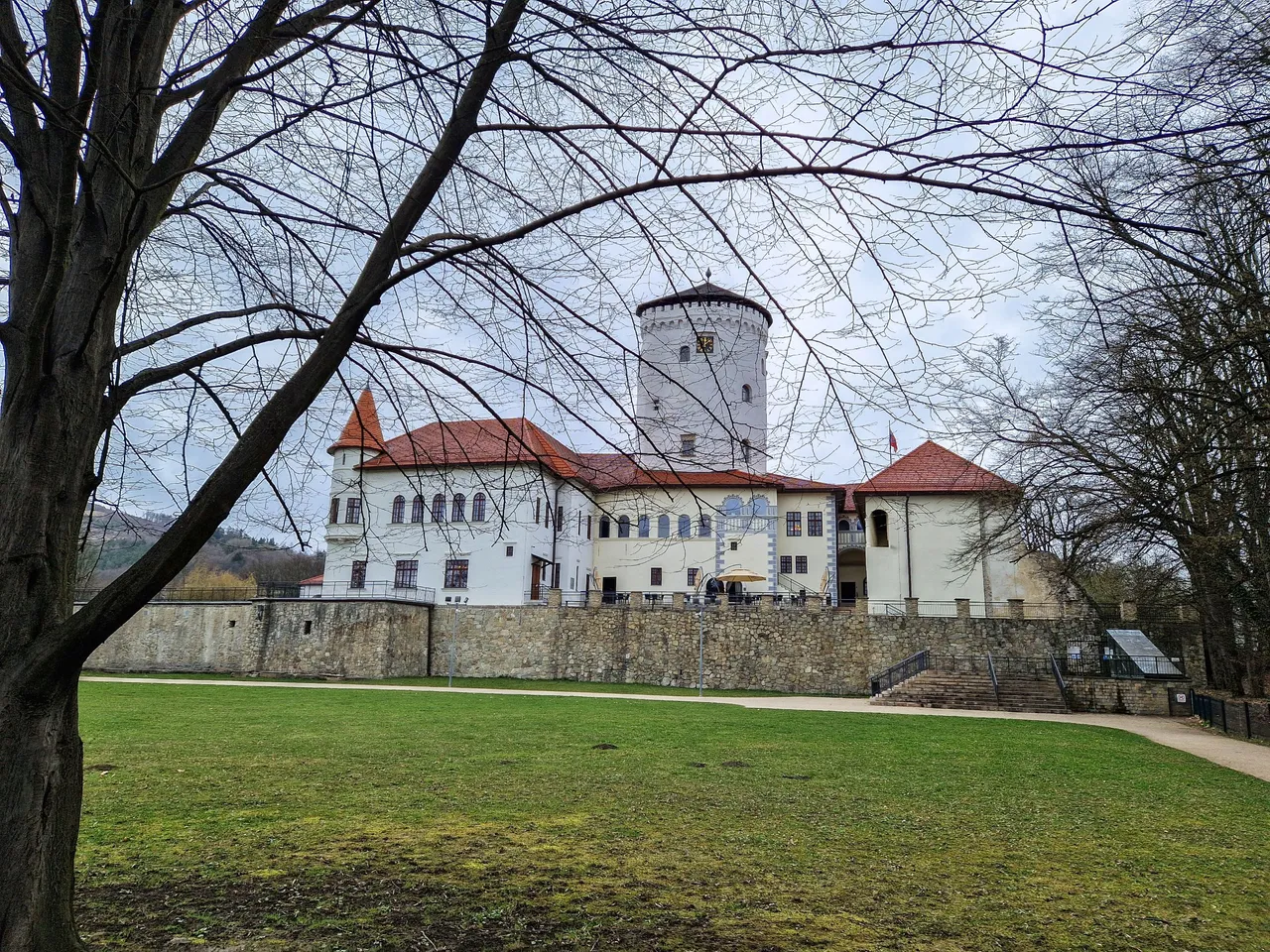
The castle dates back to the 13th century. It was built as a royal castle, which explains its appearance. Today, there are not many original features left as the castle was almost completely rebuilt, but it is possible to visit its medieval tower.
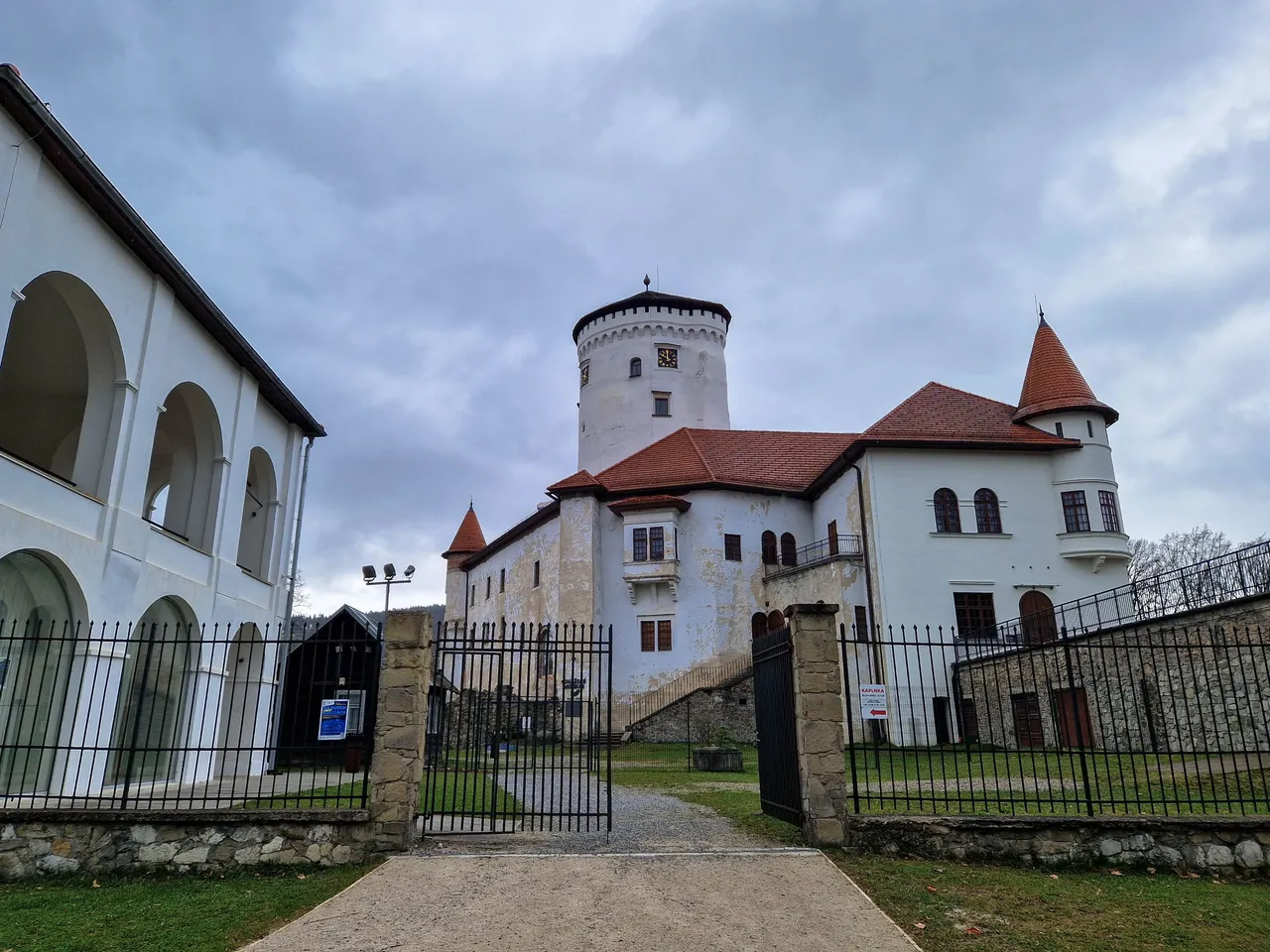
It is built next to a river and there is no natural protection from the enemies, so in the 17th century the castle was fortified. The fortification didn't protect it for long and the castle was damaged and burned by the Habsburgs in the 19th century. Later, it was rebuilt, but it was only used as barracks until the World War II. After the war, it was nationalized and rebuilt to its current appearance. History
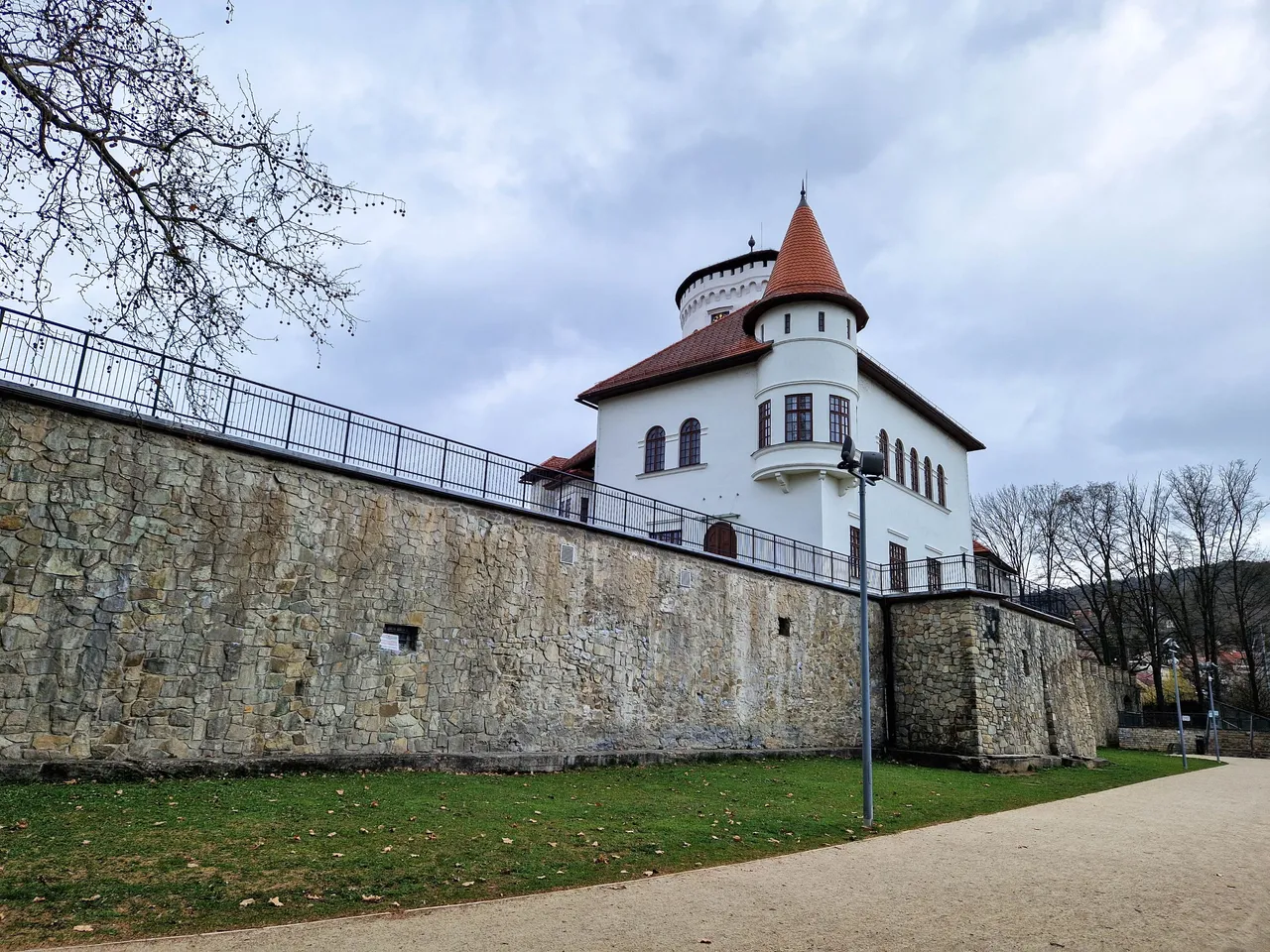
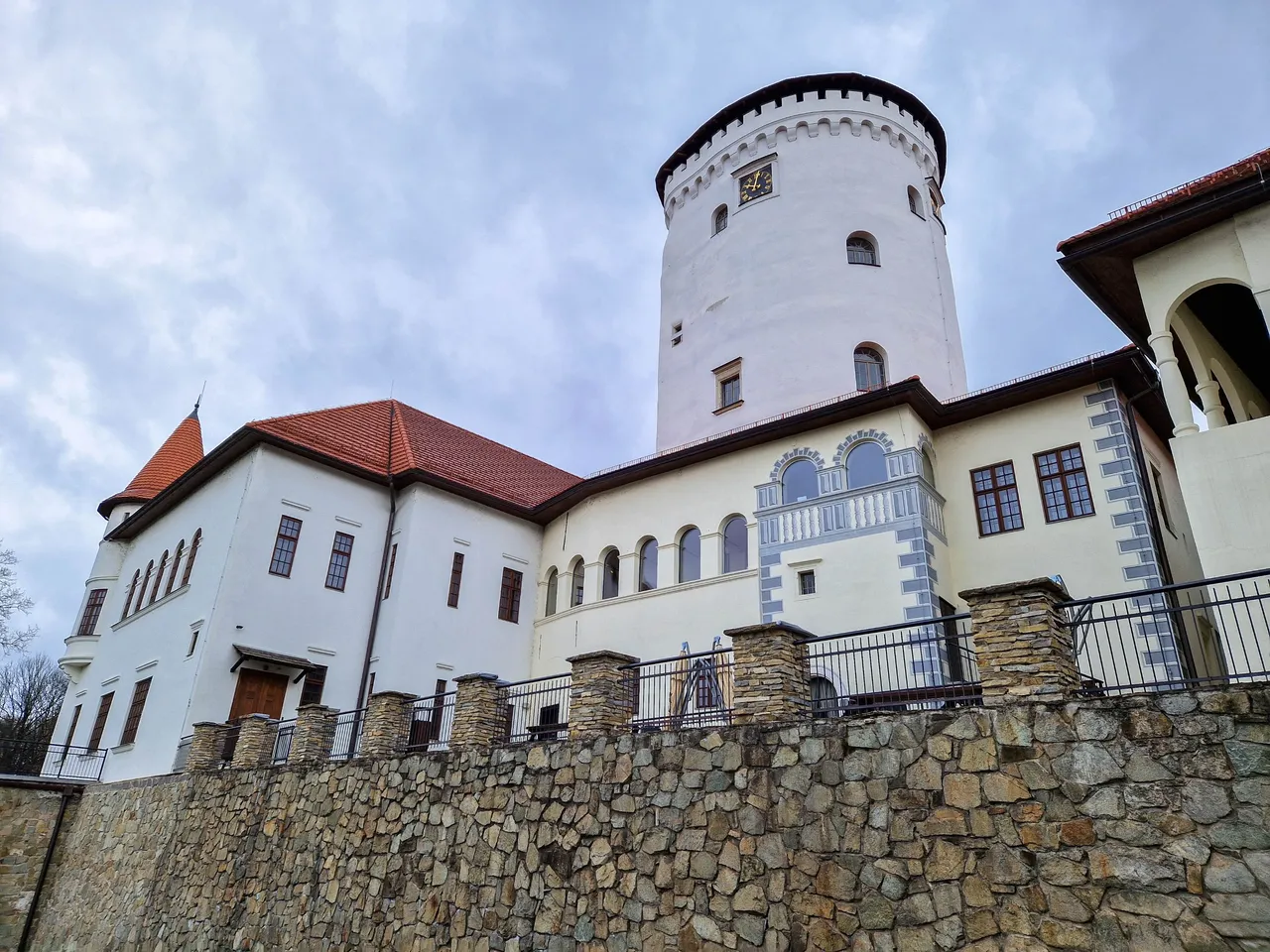
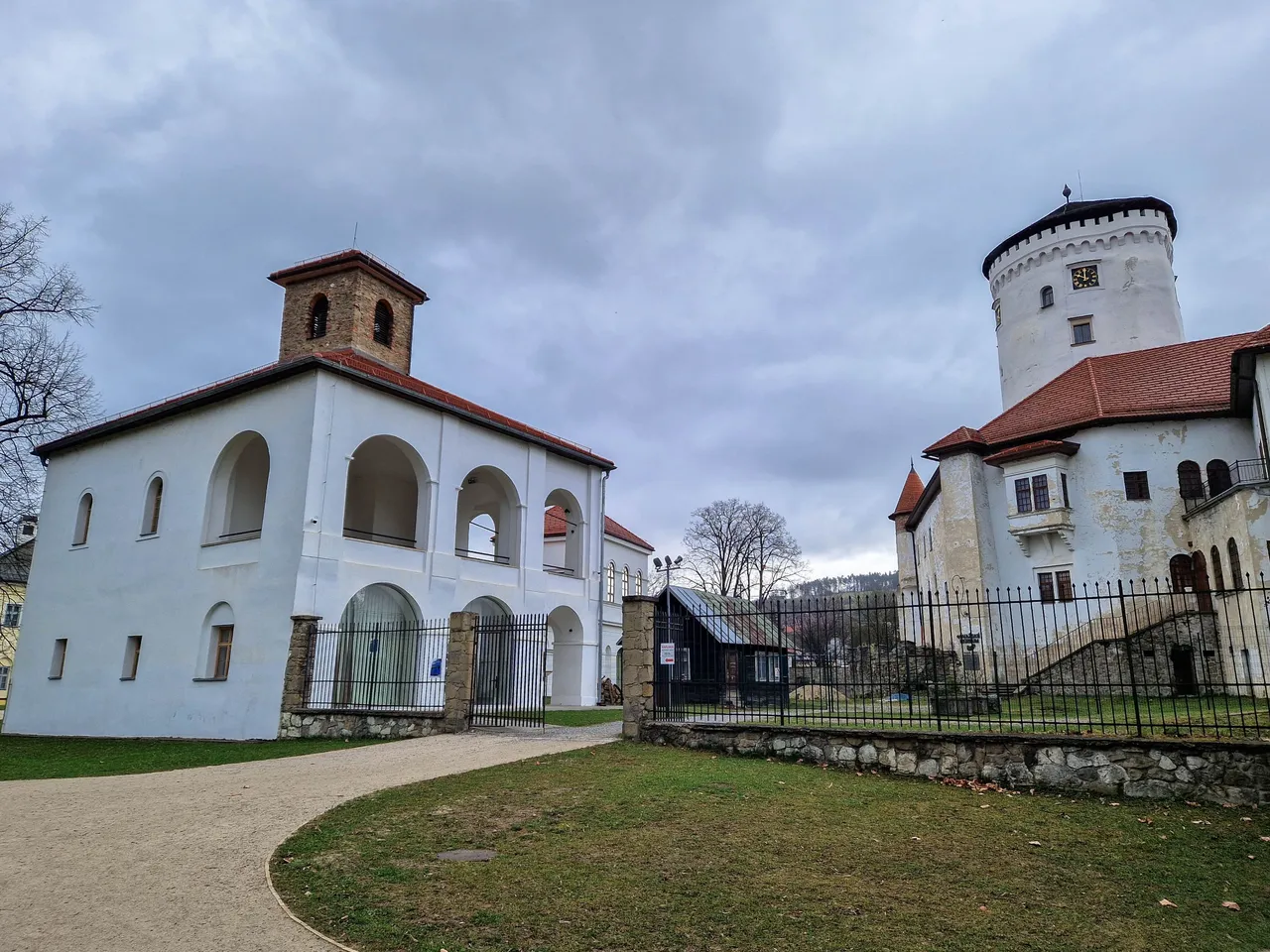
The castle is situated in the middle of a park called Budatín park. This park is used for all kind of free time activities, and we saw a few people jogging and biking. It was raining when we came, so there were not many people around, but I can imagine that in summer the area is bursting with life.
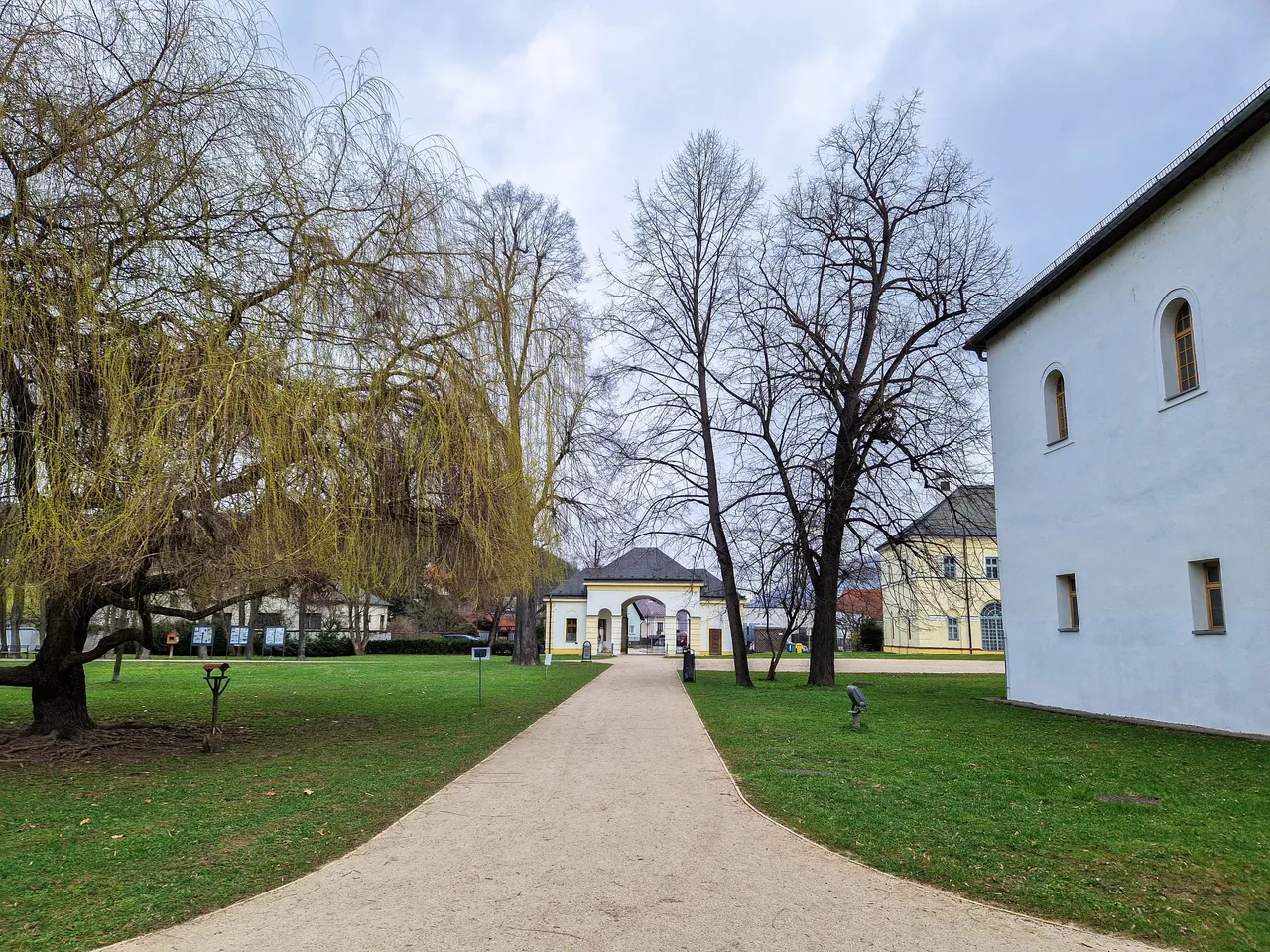
We walked around the park before entering the castle. There are information boards around the park from which you can learn some details about its flora. The oldest trees in the park are about 300 years old! There are some exotic plants too, but I guess that you can see them only when it's warmer.
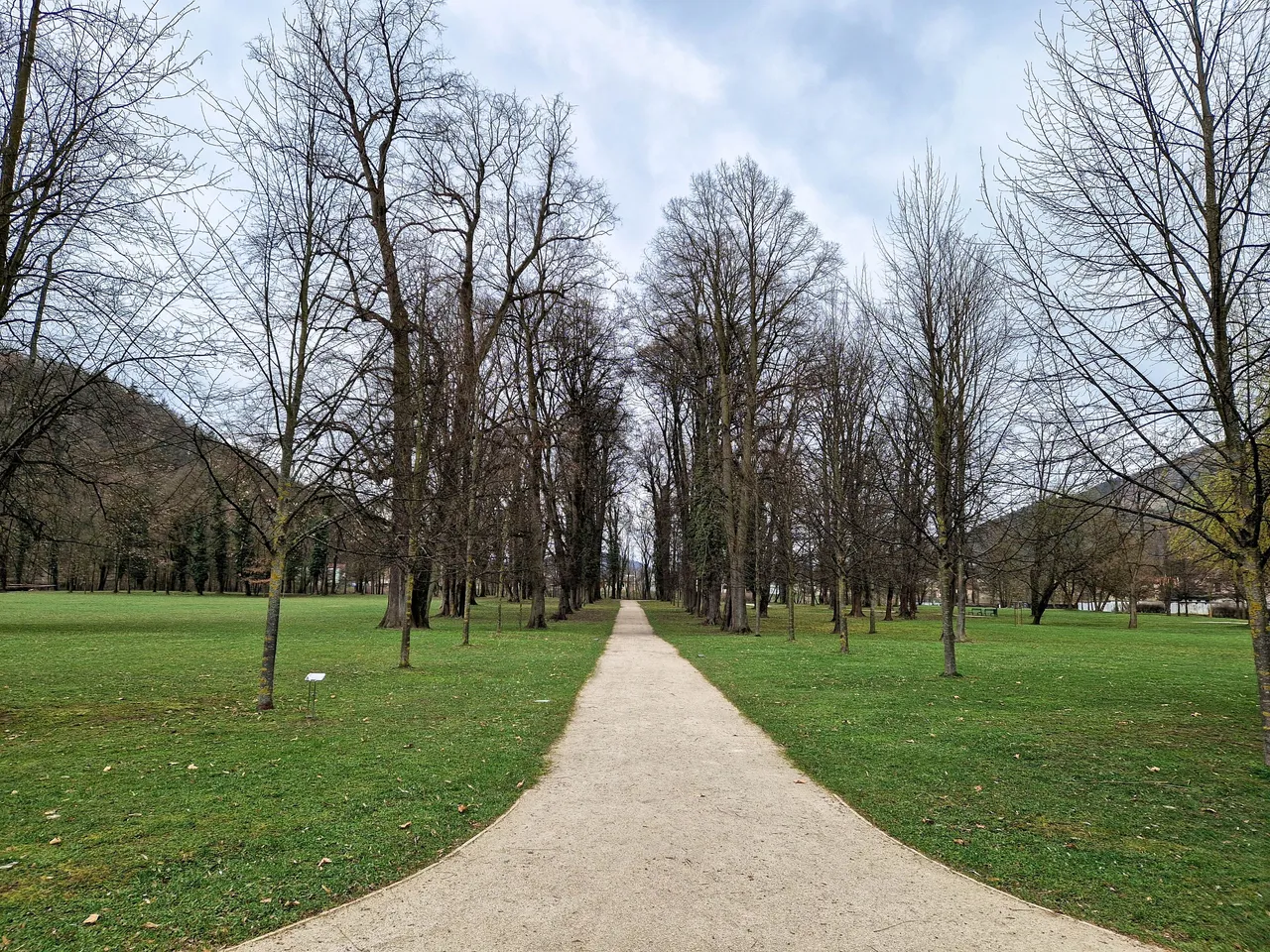
Let's go inside...
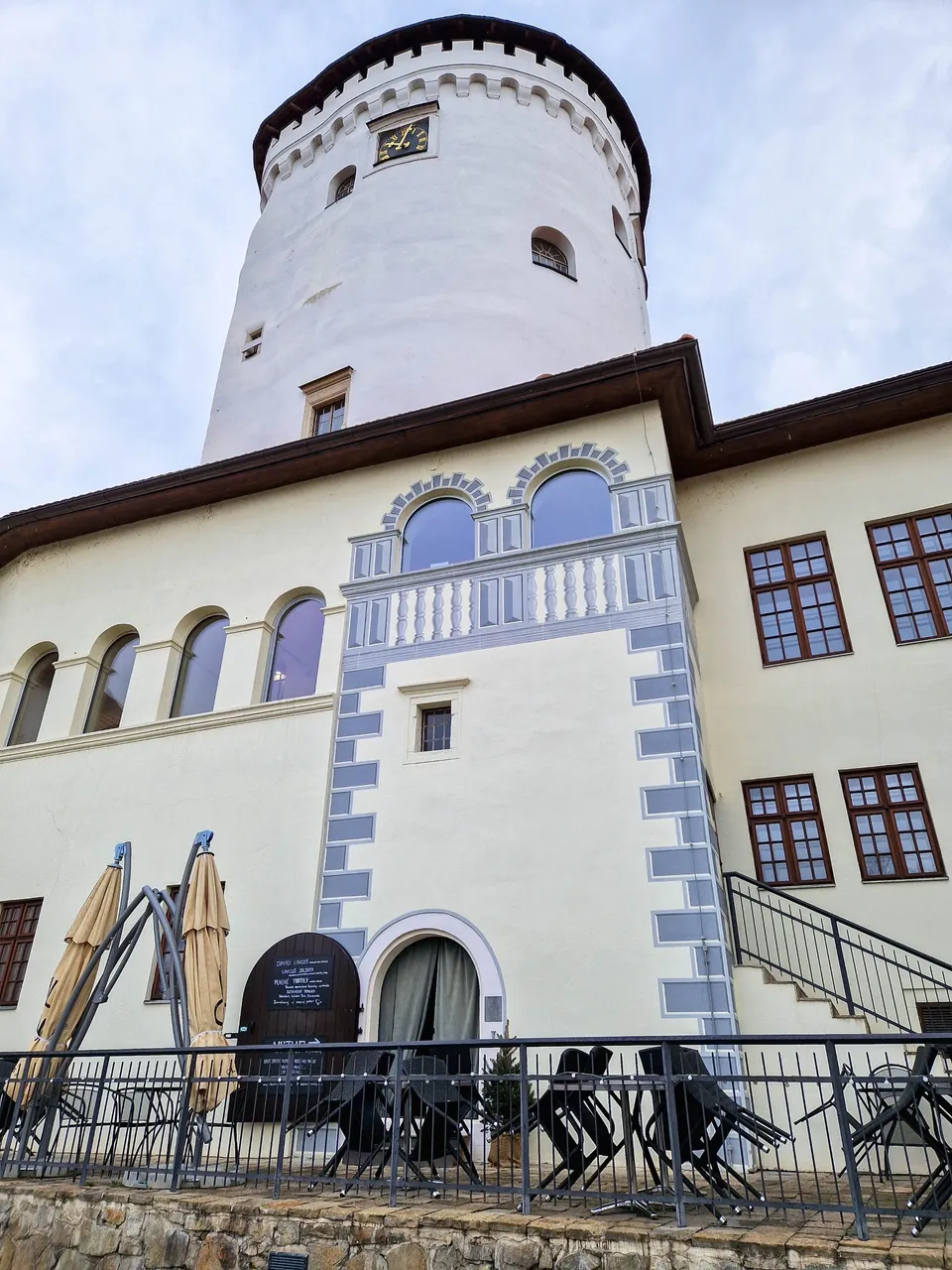
As you can see on the tower's clock, we arrived around 10 am. We only had a quick breakfast at my cousin's place and then left as the children were not happy and she was busy calming them down.
Because of this we didn't manage to have our morning coffee, so we decided to visit the castle's restaurant before going on a tour of the castle. Apparently, they only open at 10 am and when we arrived we couldn't order any coffee because the waitress came late to work and didn't turn on the coffee machine. We had to wait for 20 minutes for the machine to warm up and get our espressos. It still came out cold though.
The restaurant was stylish, and we didn't mind waiting.
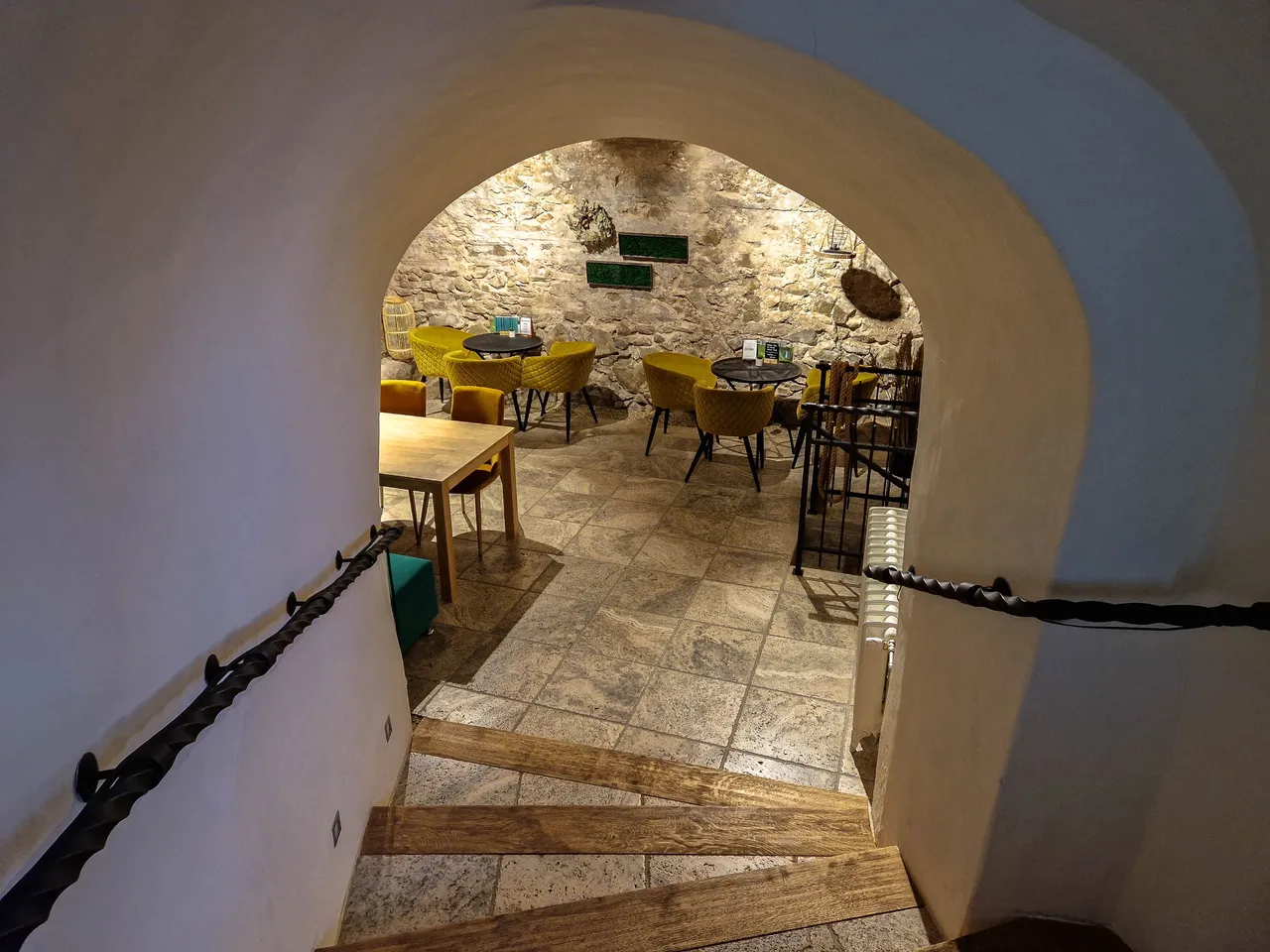
We checked out the menu and they are only serving typical Slovak dishes. It somehow fits the castle, but not the style of the restaurant (in my opinion). Once we finished our coffee, we walked towards the ticket office to purchase our tickets and start the tour.

The entrance to the castle costs 8 EUR per person. All information is in Slovak (from what I saw), but you can get a small book with description of each room in various languages. There are also castle employees in every room who are happy to answer any questions, but I'm not sure if there is somebody who would be able to answer in English.
The exposition starts with archaeological finds. It is dedicated to the development of settlements in Slovakia and you can find there various objects from Žilina and its surroundings.
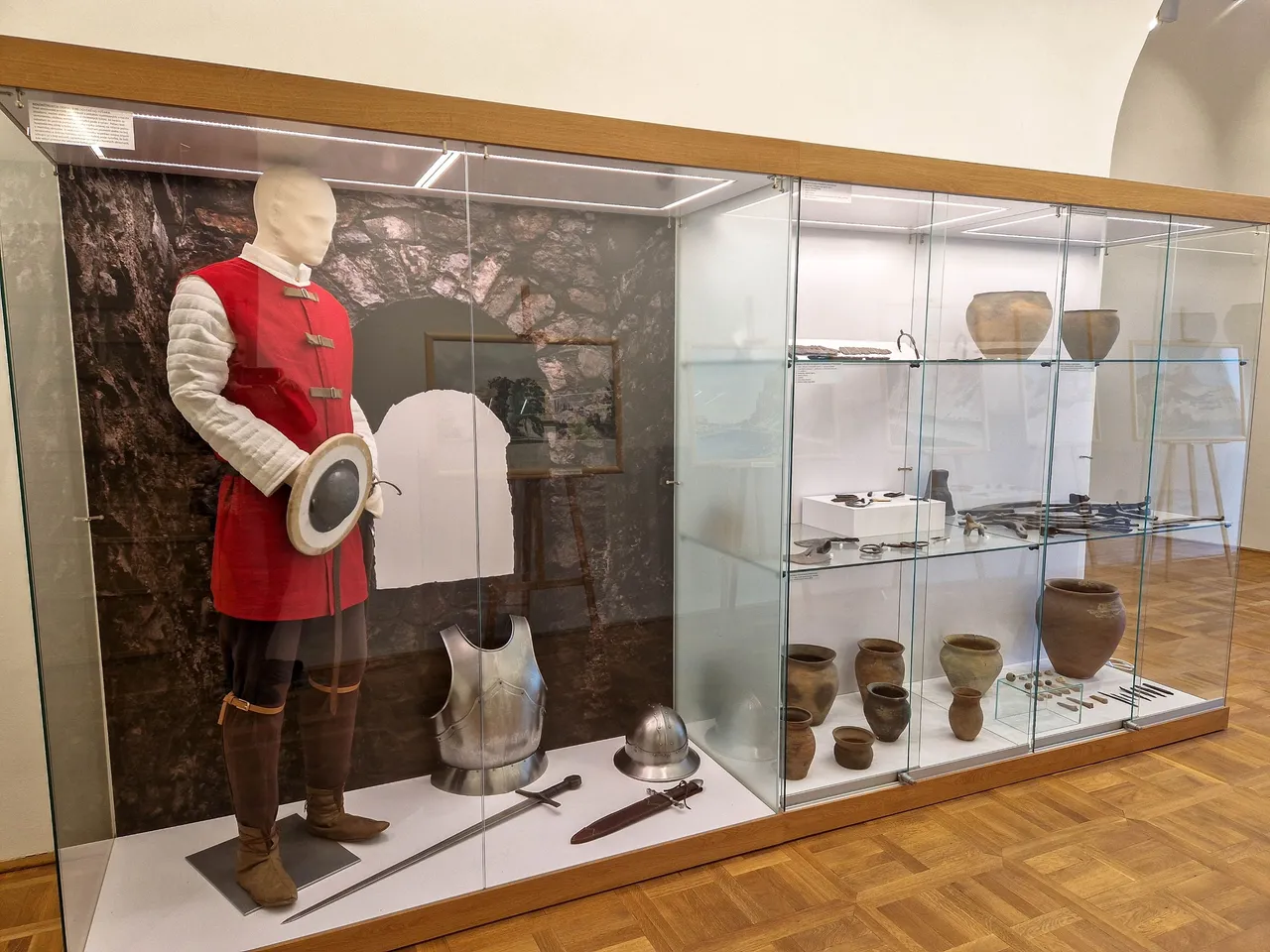
Here we can see the most valuable objects in the castle with wooden sculptures dating back to the 15th century.
These walls are one of the few original parts in the castle. They are a couple of meters thick, and normally it should be cold in this room, but the temperature is managed to protect the valuable items.

The second part of the archaeological exposition is dedicated to the castle, and we found there three models of the castle from the 14th, 16th and 18th centuries.
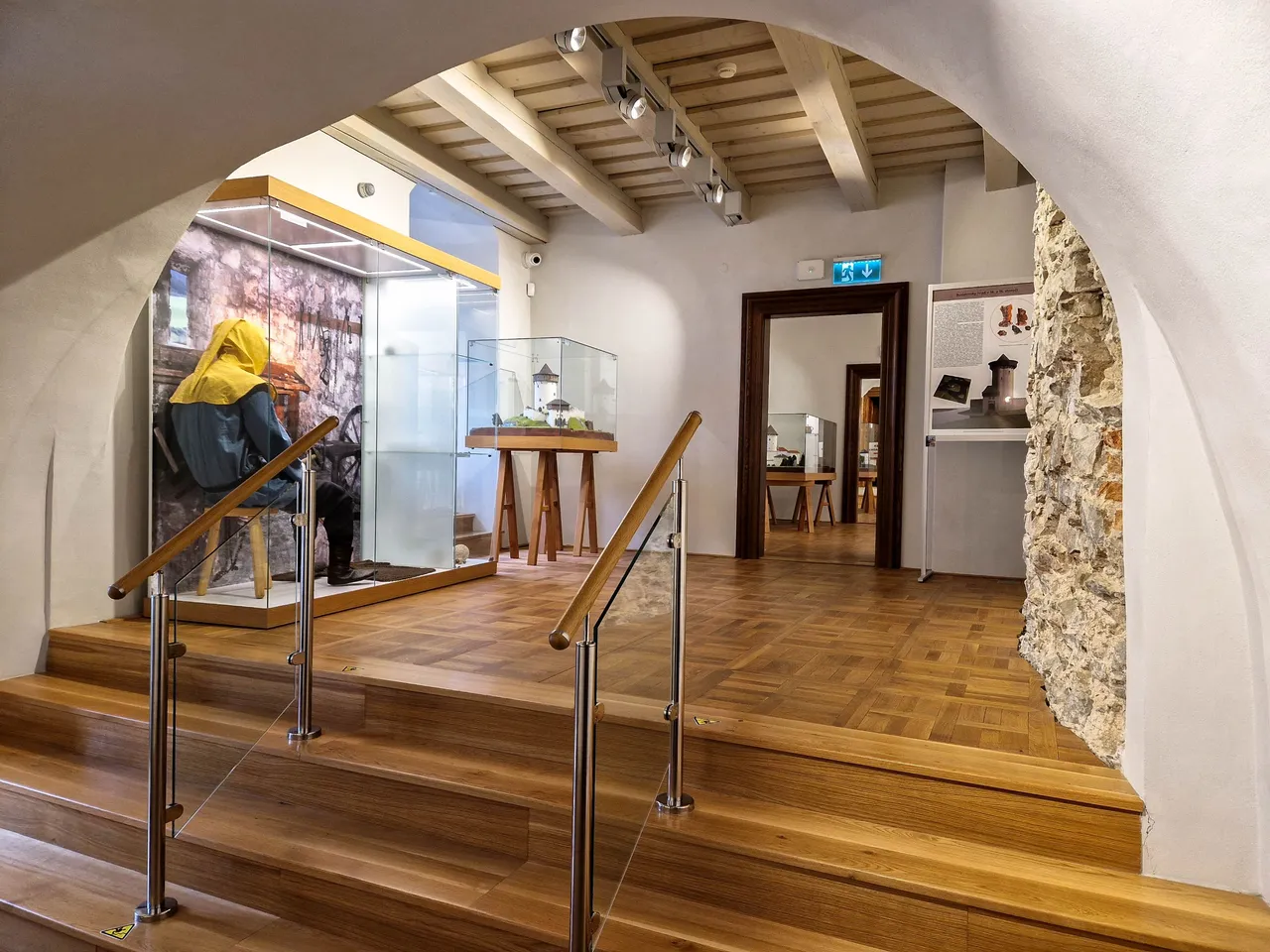
In the past, Budatín castle was surrounded by a water moat, and therefore it belonged to only a few water castles in Slovakia.
The first official owner of the castle was Matúš Čák Trenčiansky, Hungarian oligarch who owned a big part of the country. It was interesting to read about what I learned at school many years ago.
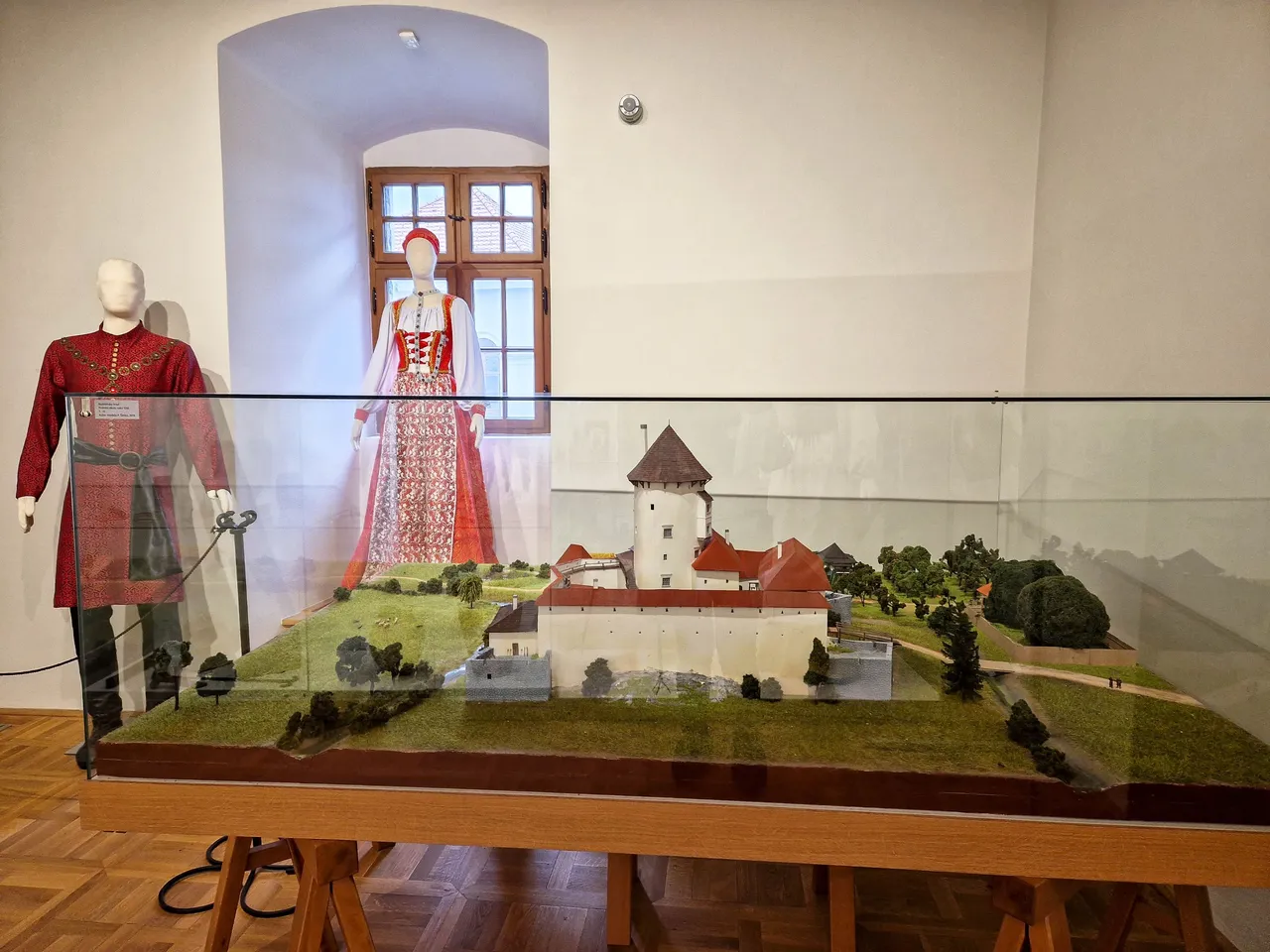
Over the centuries, the castle gained importance as well as size. The fortification walls were build to protect the castle and its inhabitants.
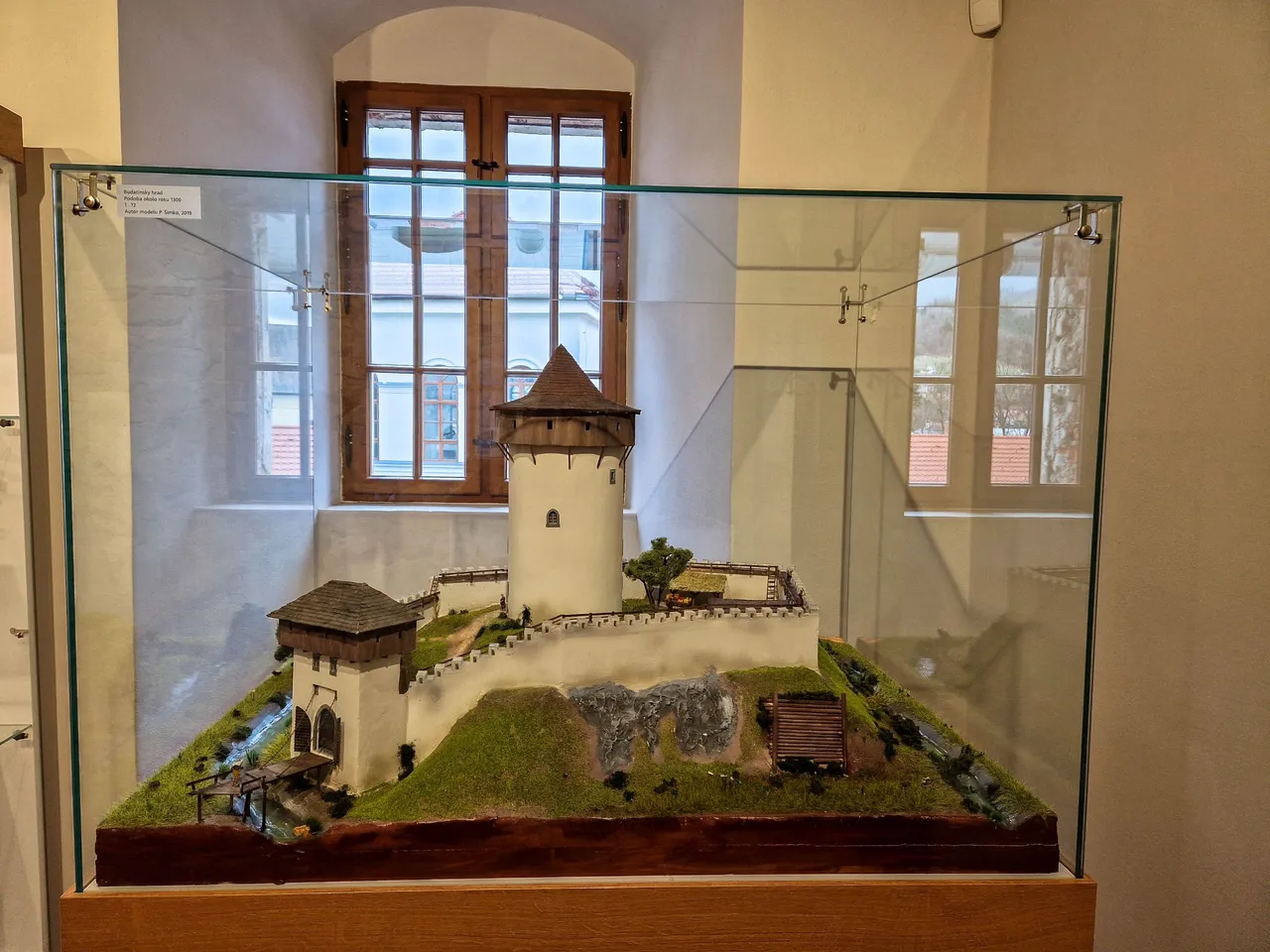
On the other side of the room we saw more archaeological items and an example of traditional clothing. My grandma used to wear similar headscarf. I only saw her once without her headscarf. It was when she was preparing herself for bed combing her long gray hair.
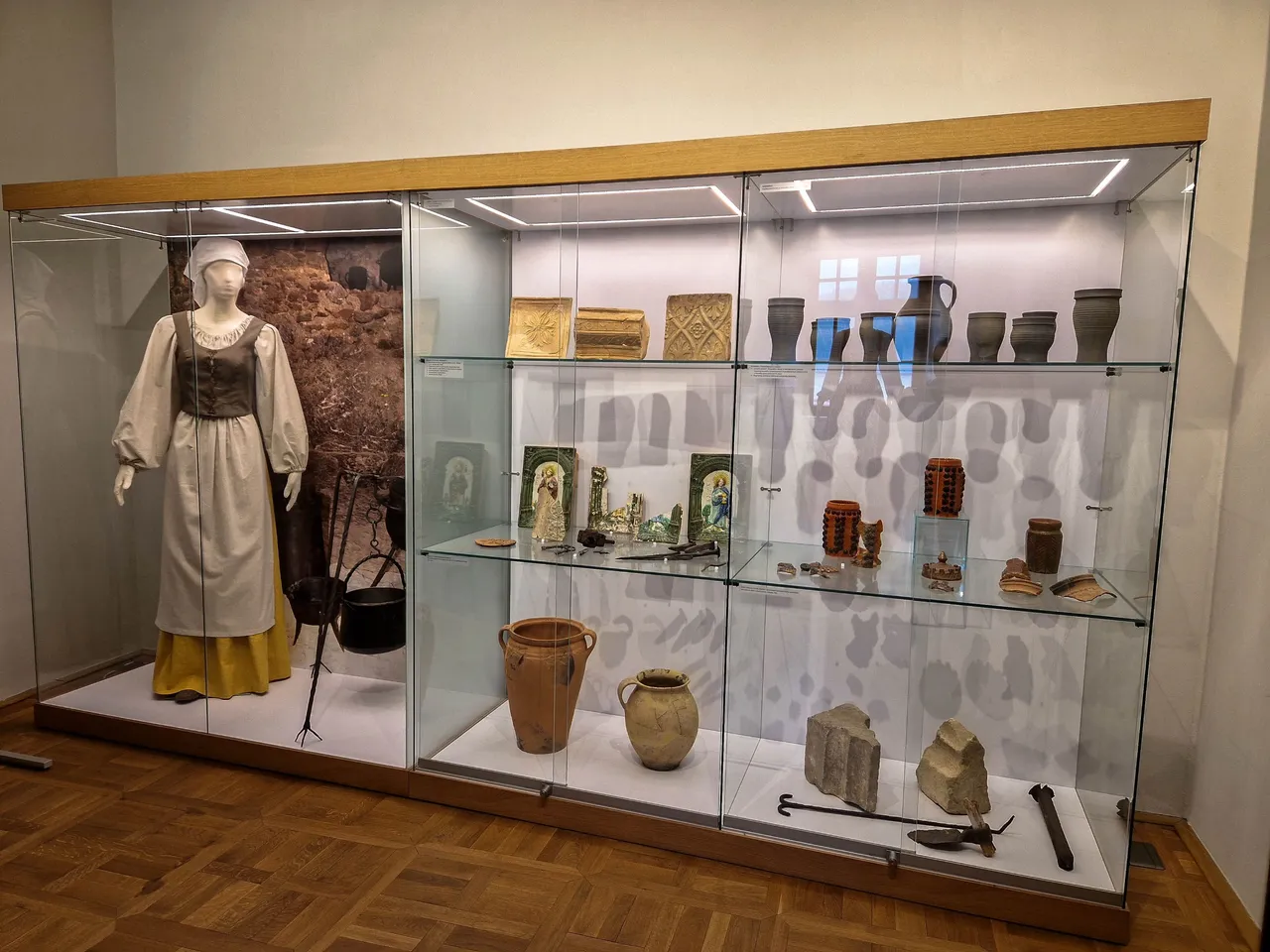
And here we can see the castle before the fire. Some features resemble its current appearance, but there are many parts that were changed or are missing today.
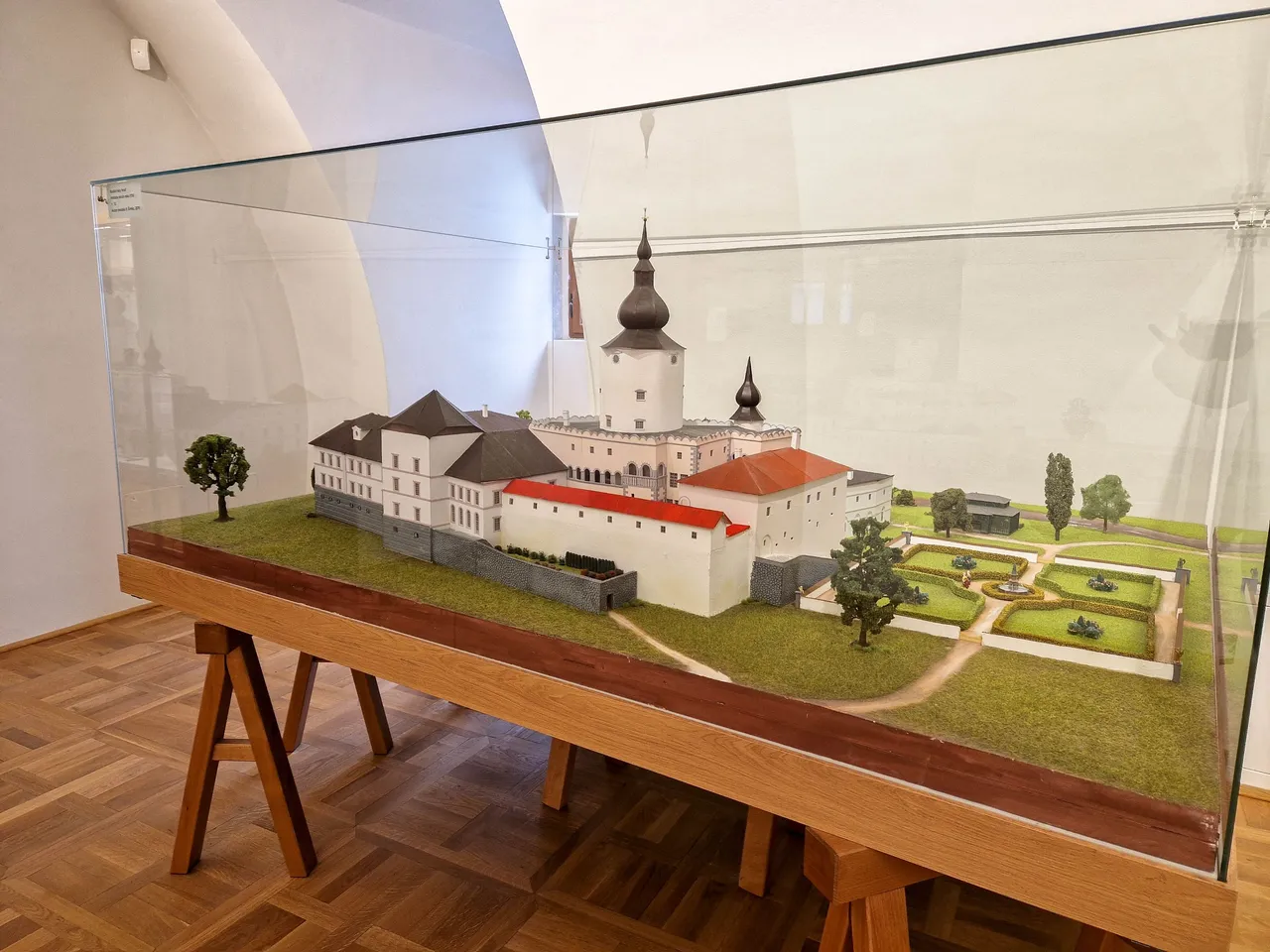
Let's move to the next part of the exposition...
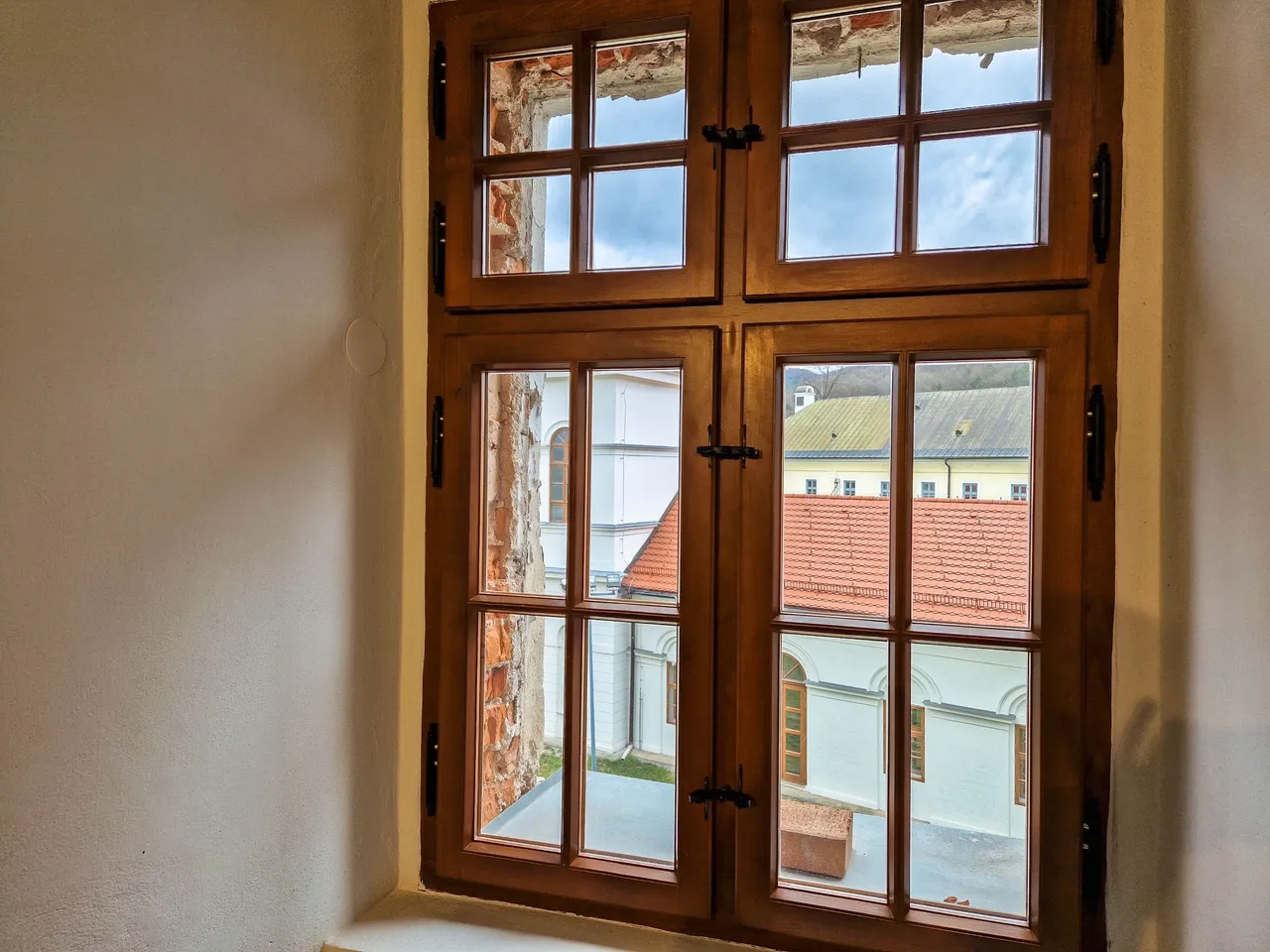
In this part, we could see the rooms that were inhabited by the last owner of the castle Gejza Čáki. He lived in the castle until 1945. The castle was nationalized after the war and he had to leave. In 1961, he left to France to live with his daughter. This is where he died in 1974.
The guide told us that even today some people remember Gejza. He was a kind gentleman who treated kids in the village with cookies. These kids are retired now, but they still have fond memories of Gejza.
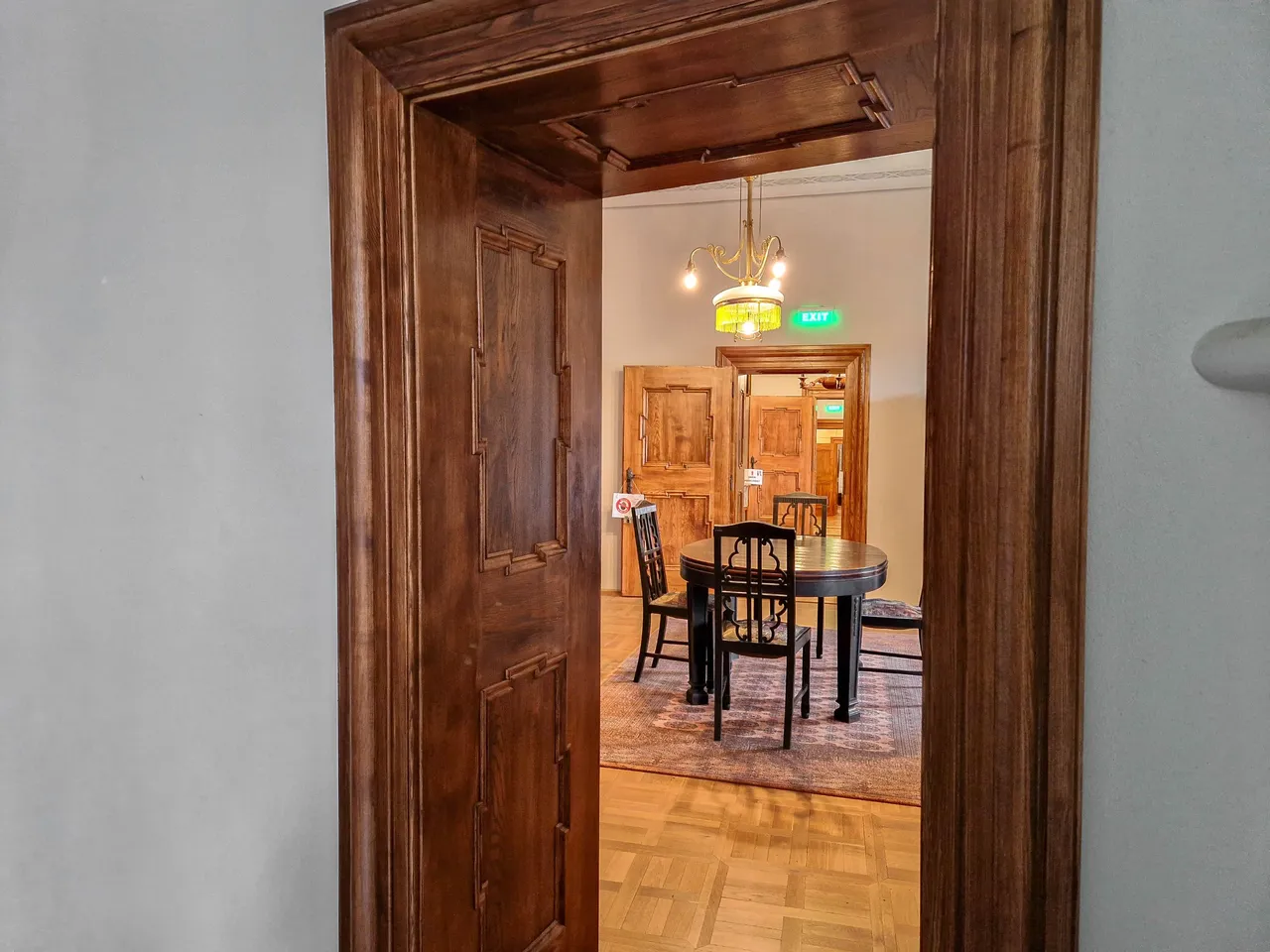
On these portraits we see Franz Joseph I of Austria with his wife Empress Elisabeth of Austria also known as Sissy. She looks nothing like the actresses portraying her in movies 🙂
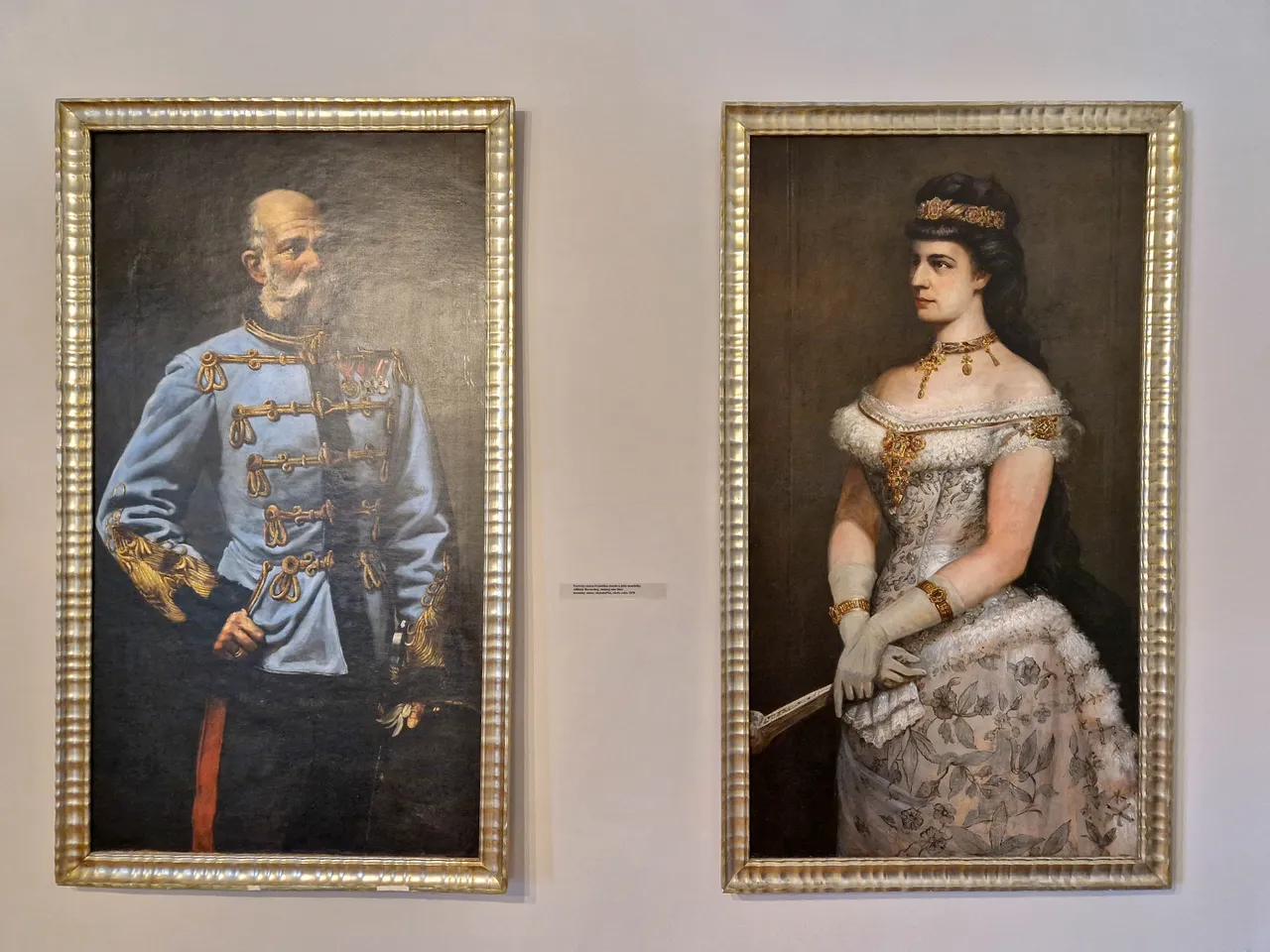
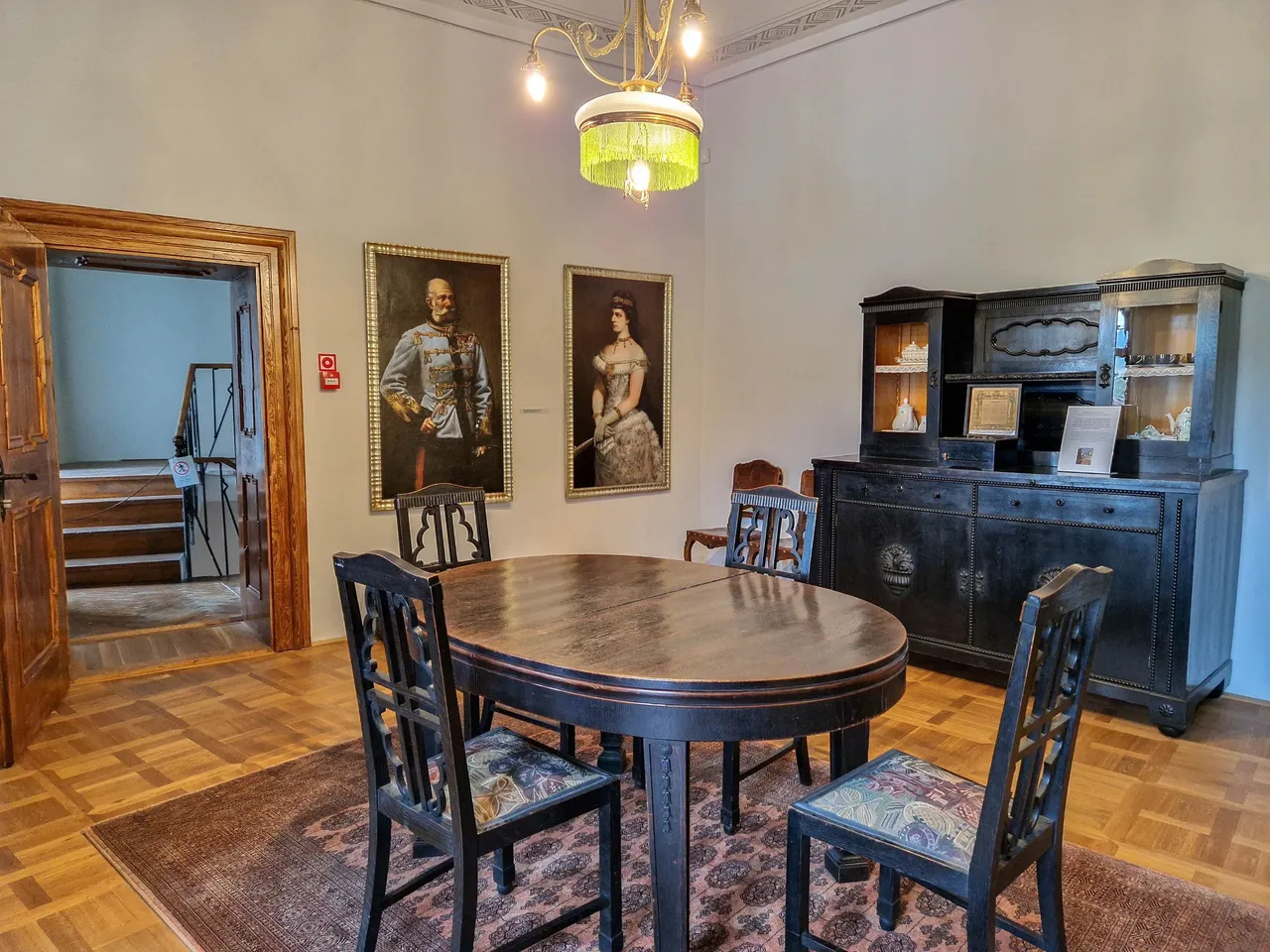
I loved the wooden floors in the castle. It made that squeaky sound from horror movies.
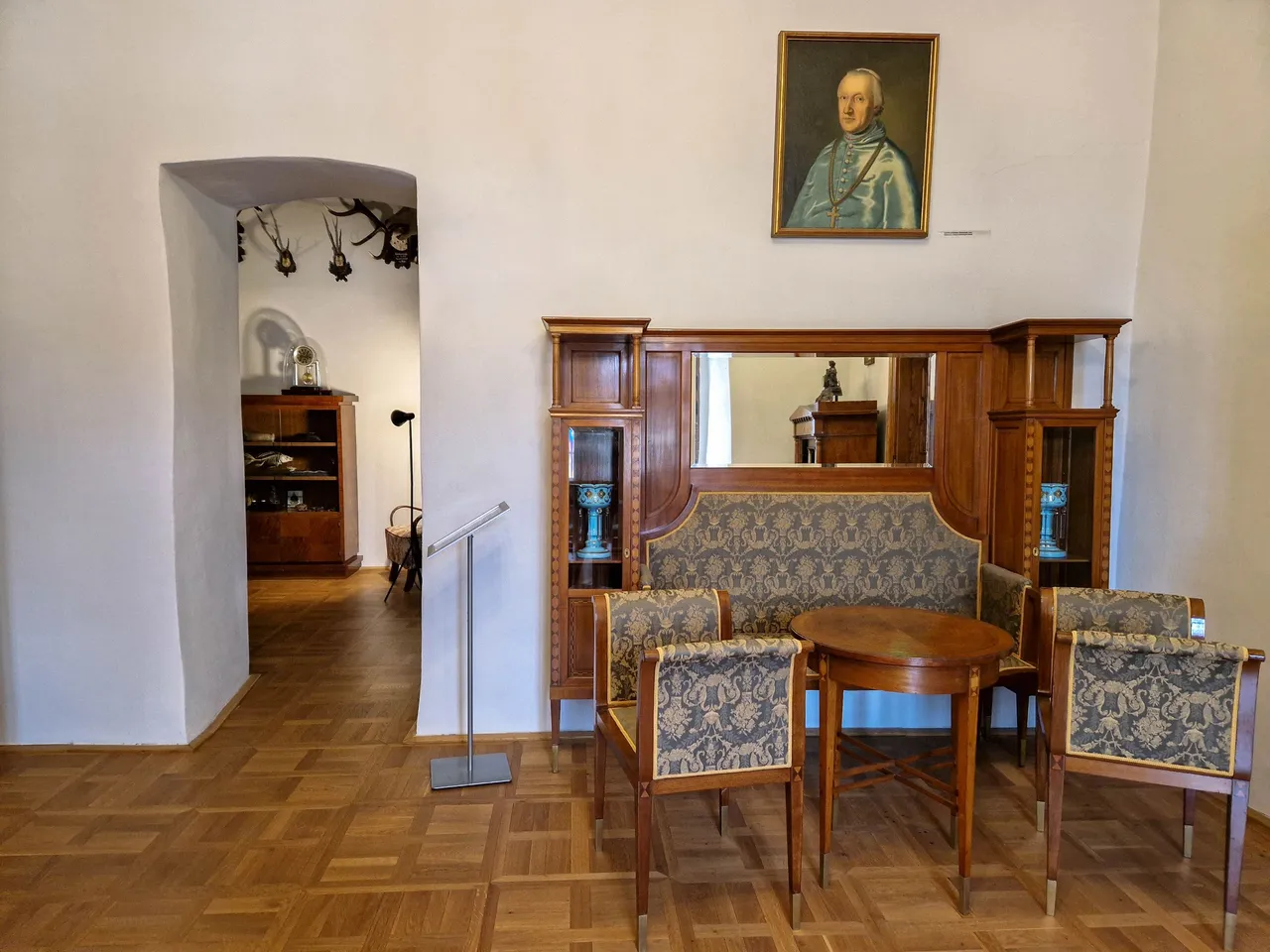
Most of the furniture are replicas and they serve as examples of how such rooms where furnished in the 18th-20th centuries.
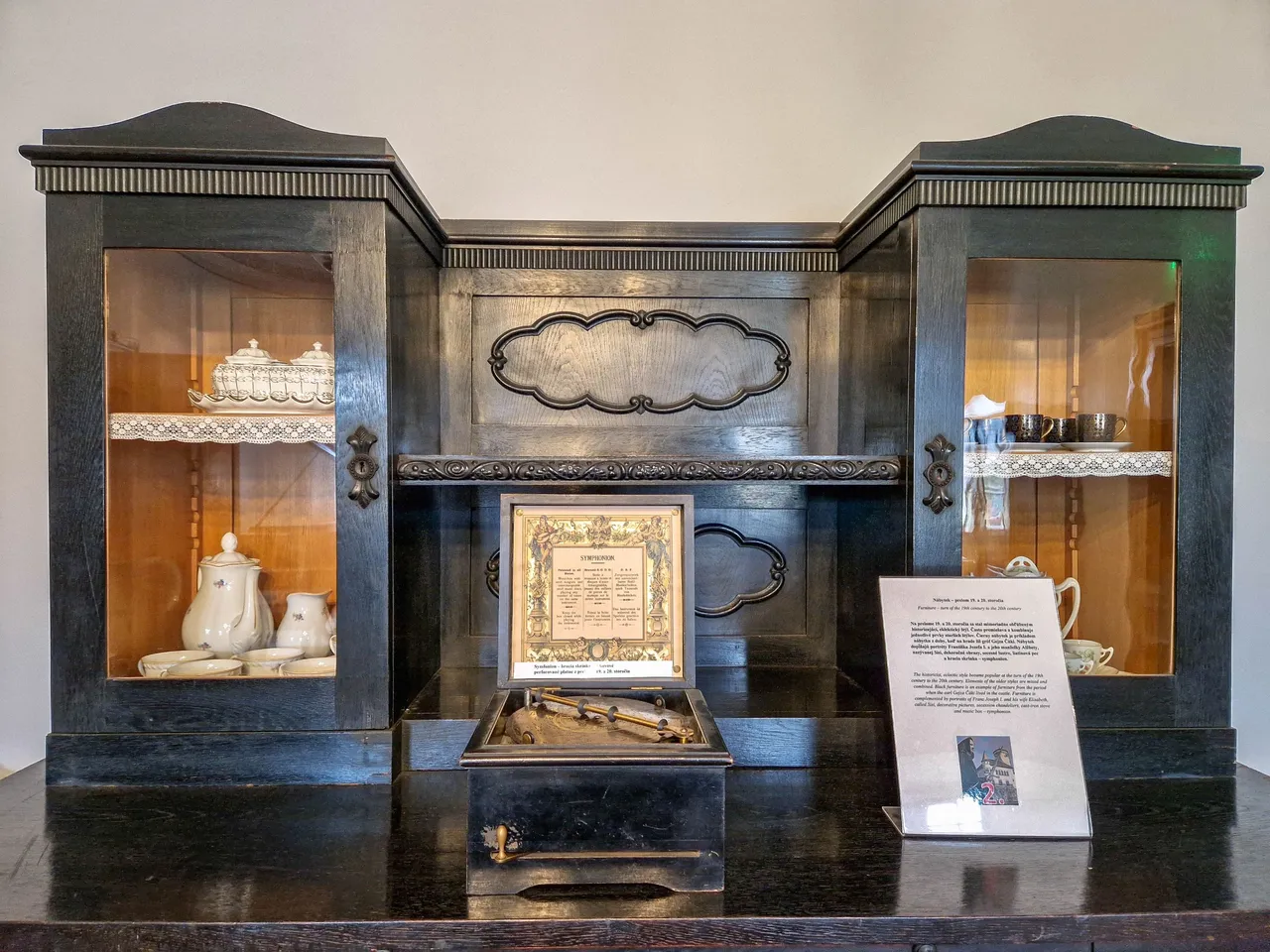
This is the family tree of Gejza Čáki...
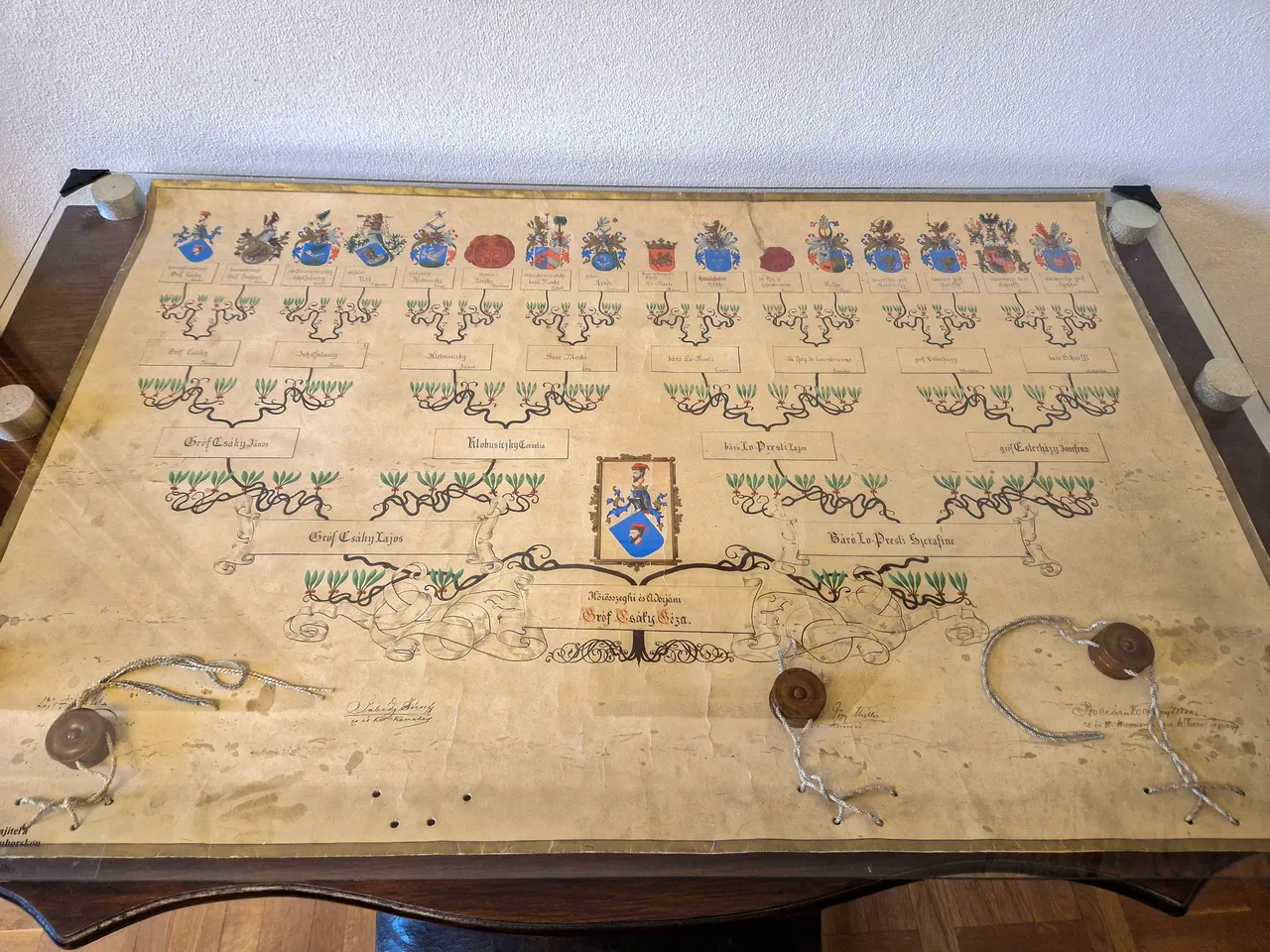
Milan Rastislav Štefánik was a politician who served in the World War I. He died in a plane crash and here we can see an original part of this plane. Another history lesson in real life.
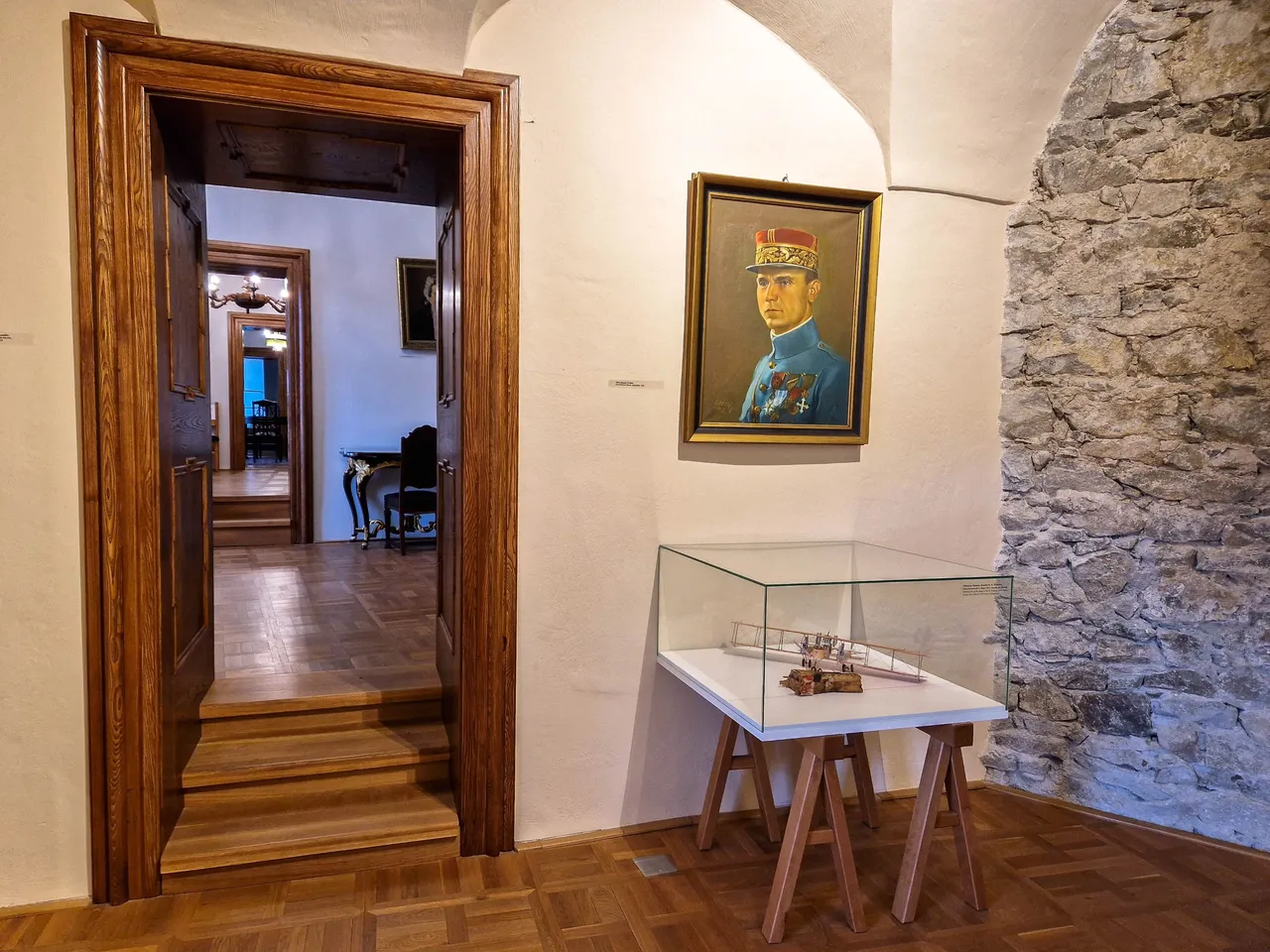
I enjoyed this part of the exposition as I have always been fascinated by World War I. and the time around the first Czechoslovak republic.
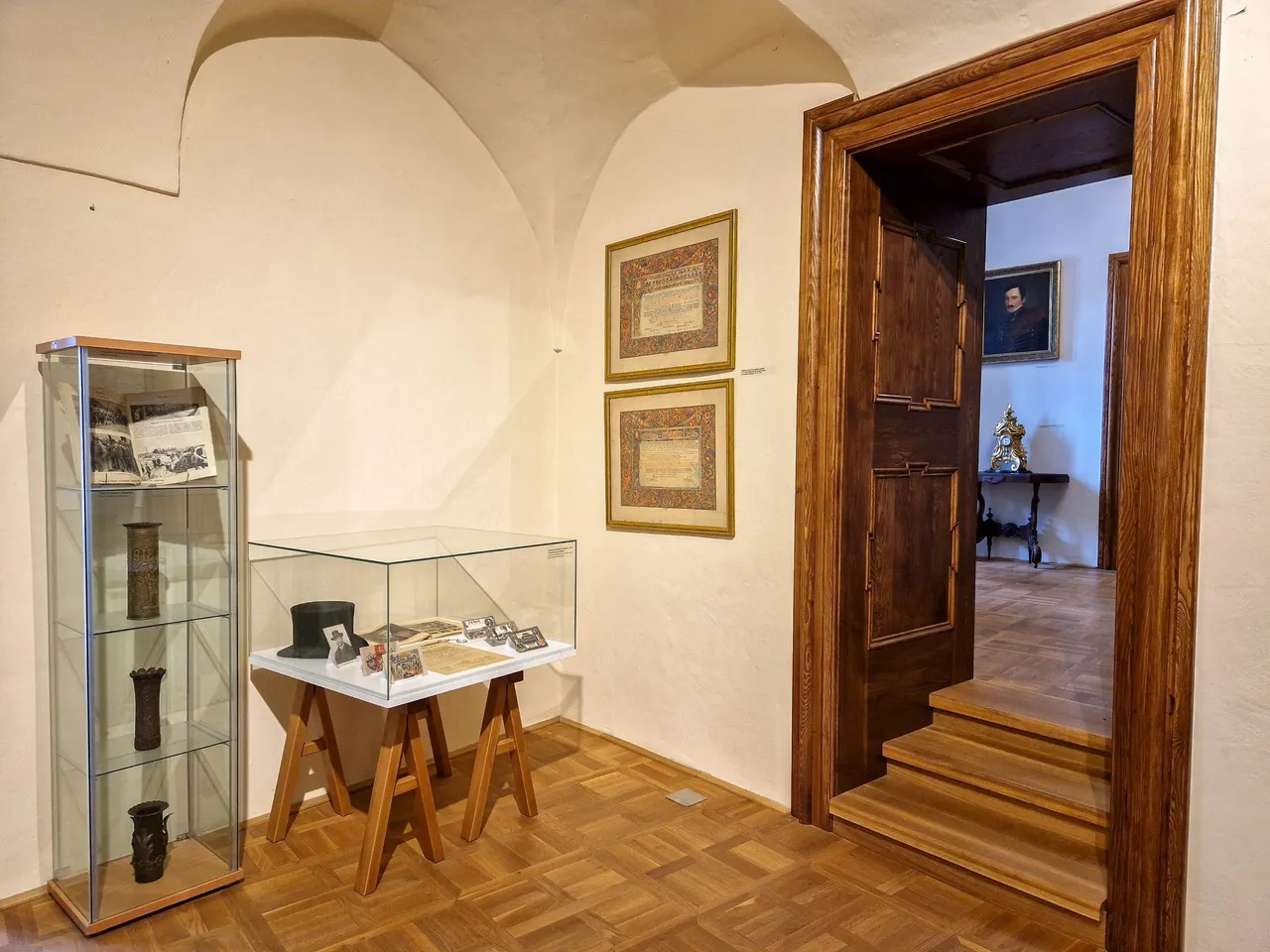
Here we can see examples of regional crafts and gilts.
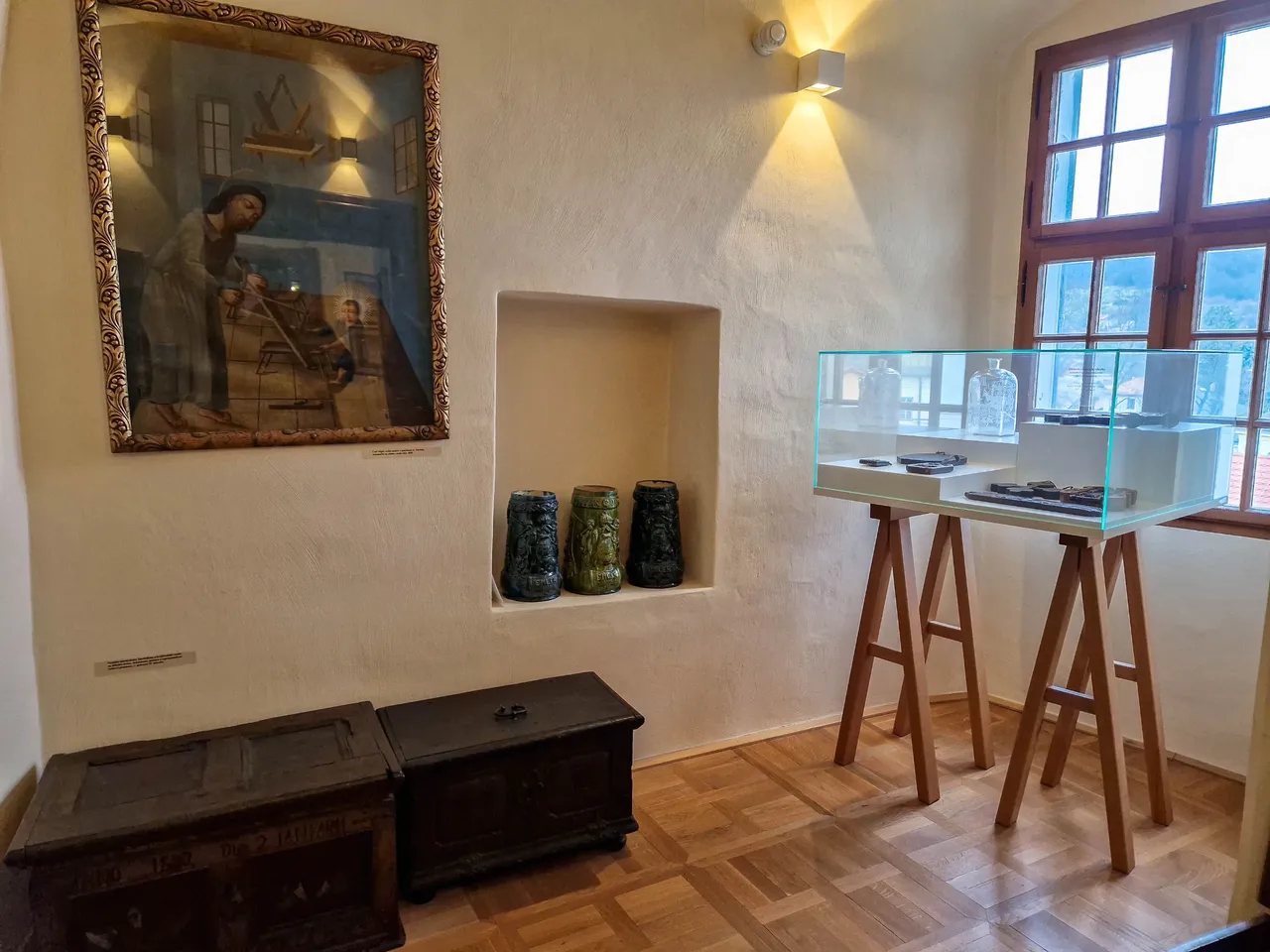
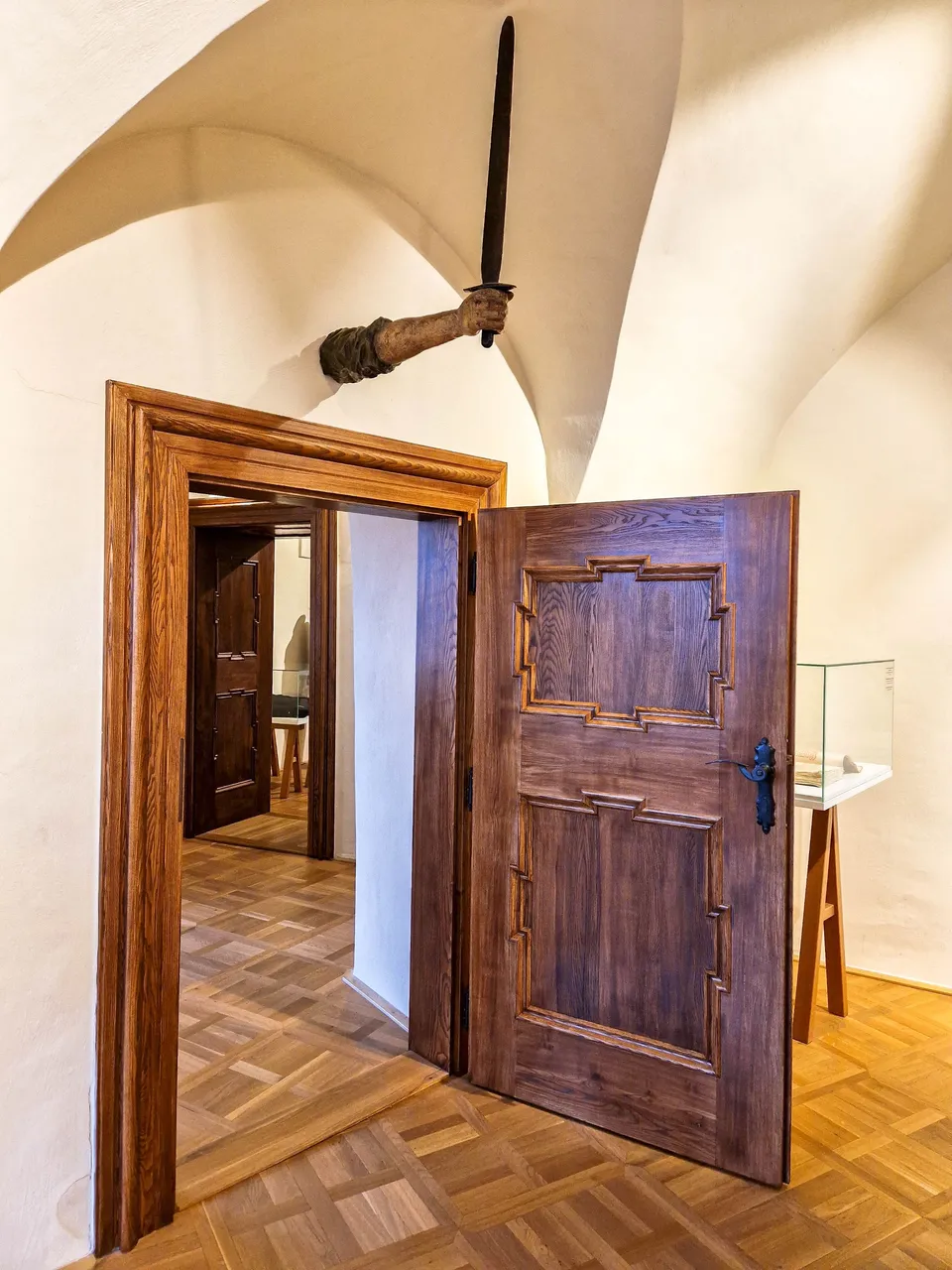
Žilina was an important town during medieval time. It had a lot of privileges and rights, one of them was right of swords which means that executions could be held in the city. The sword was originally situated above the gate of the townhall. Today, we can see it in the castle.
The executioner was a well respected person and lived in one of the biggest houses.
Below we can see examples of his swords. As you can see they had different form than standard swords. At the end, they were also used for different purpose than the standard ones 🙂
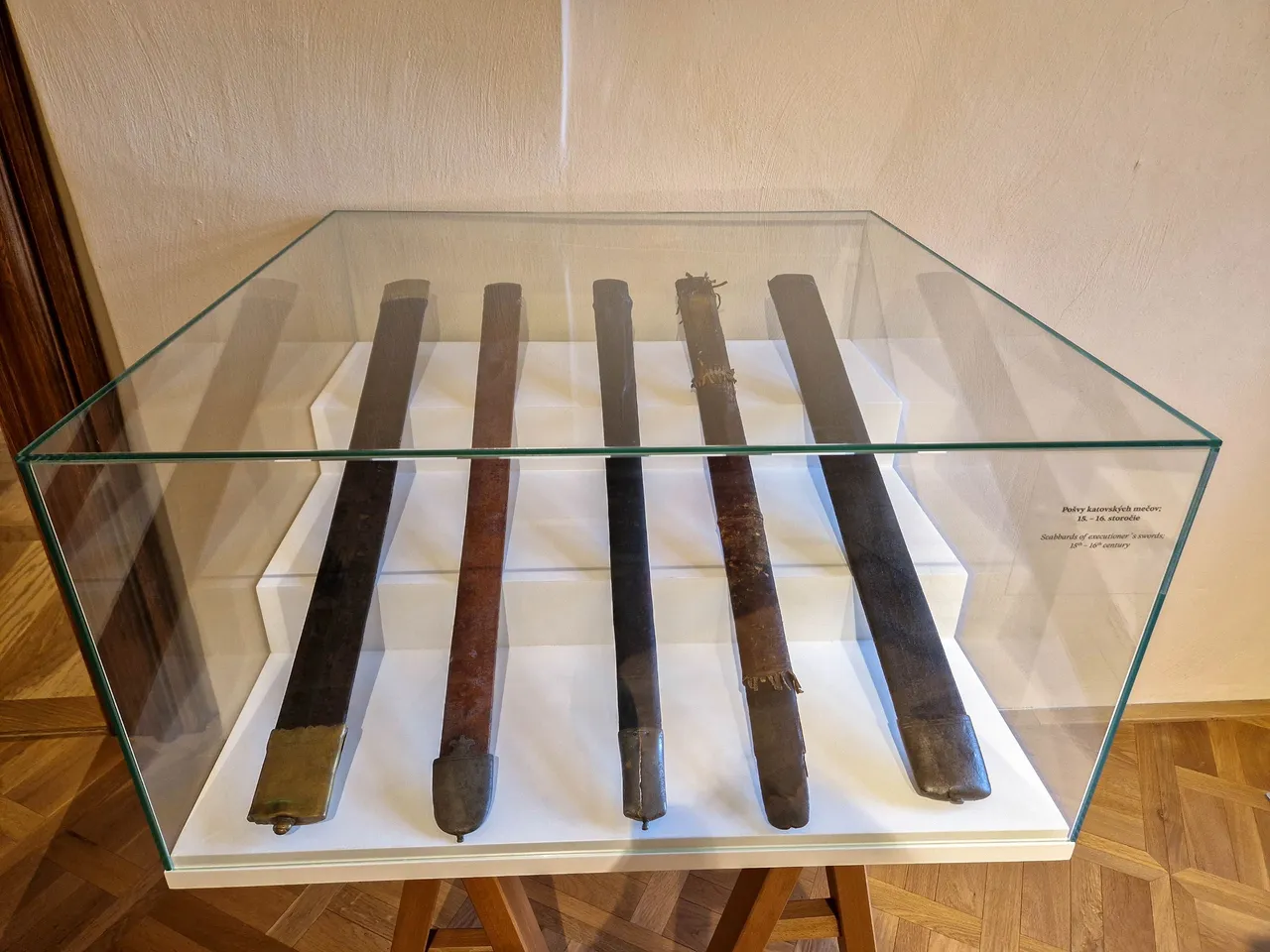
We also learned some interesting facts about Žilina. I would only mention that it's more than 800 years old!

This is an original treasury which could only be accessed by three people. Each of them had a key, and they could only open it altogether. It's similar to the banking system that we have at work. It's actually even better as we only have two signatories 🙂
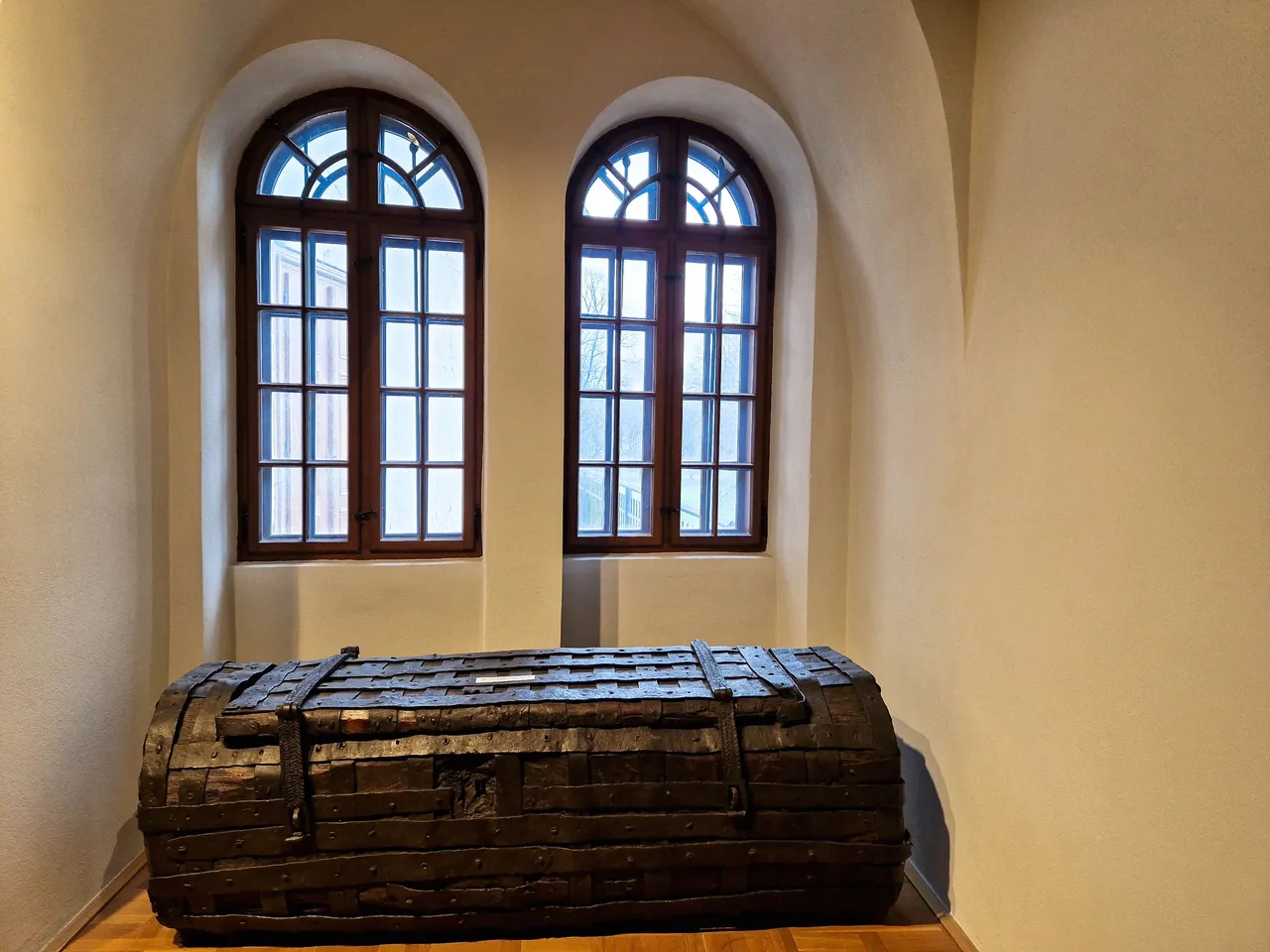
This room was a little bit confusing as it showed a bit of everything. See it for yourself...
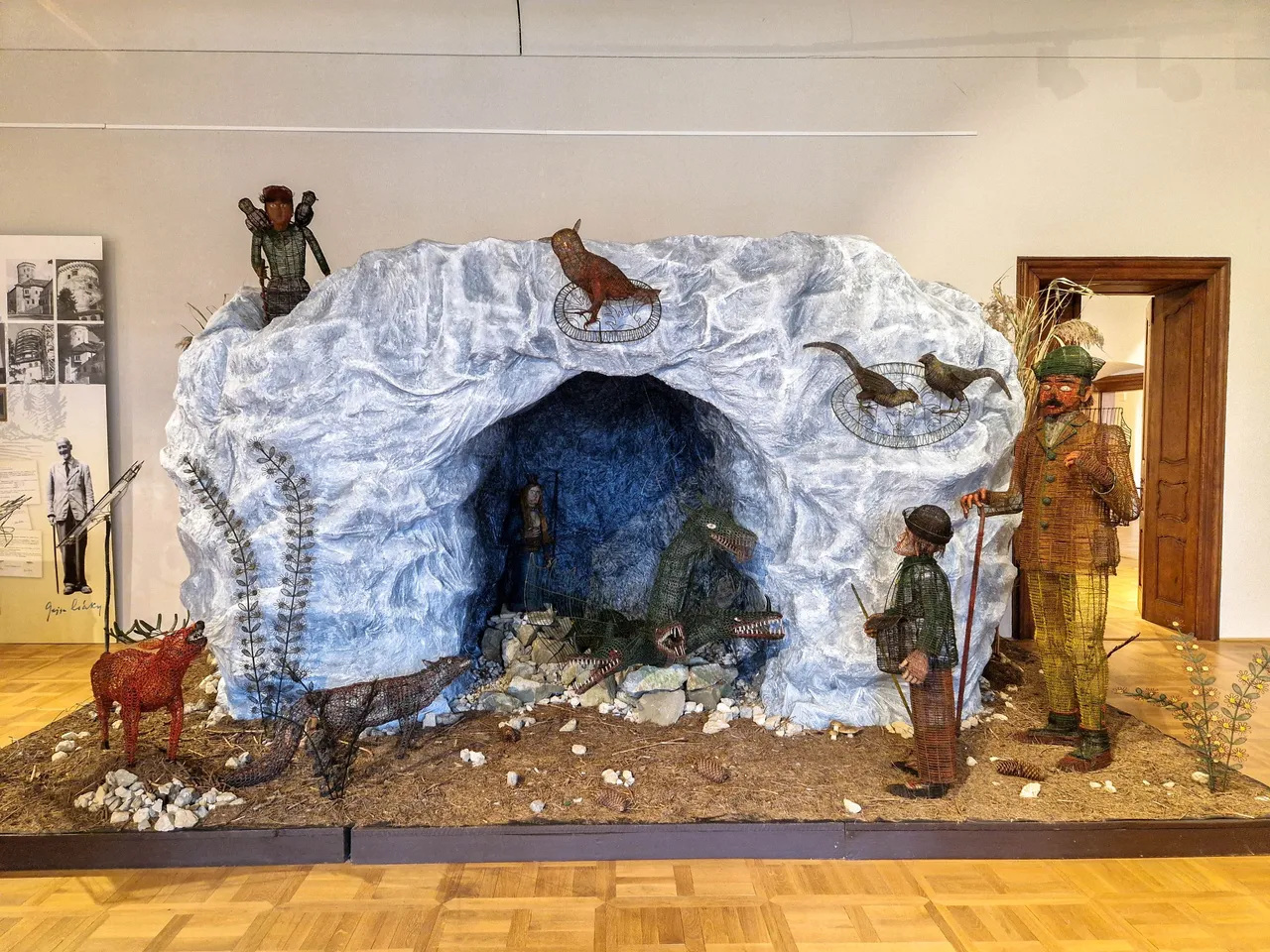
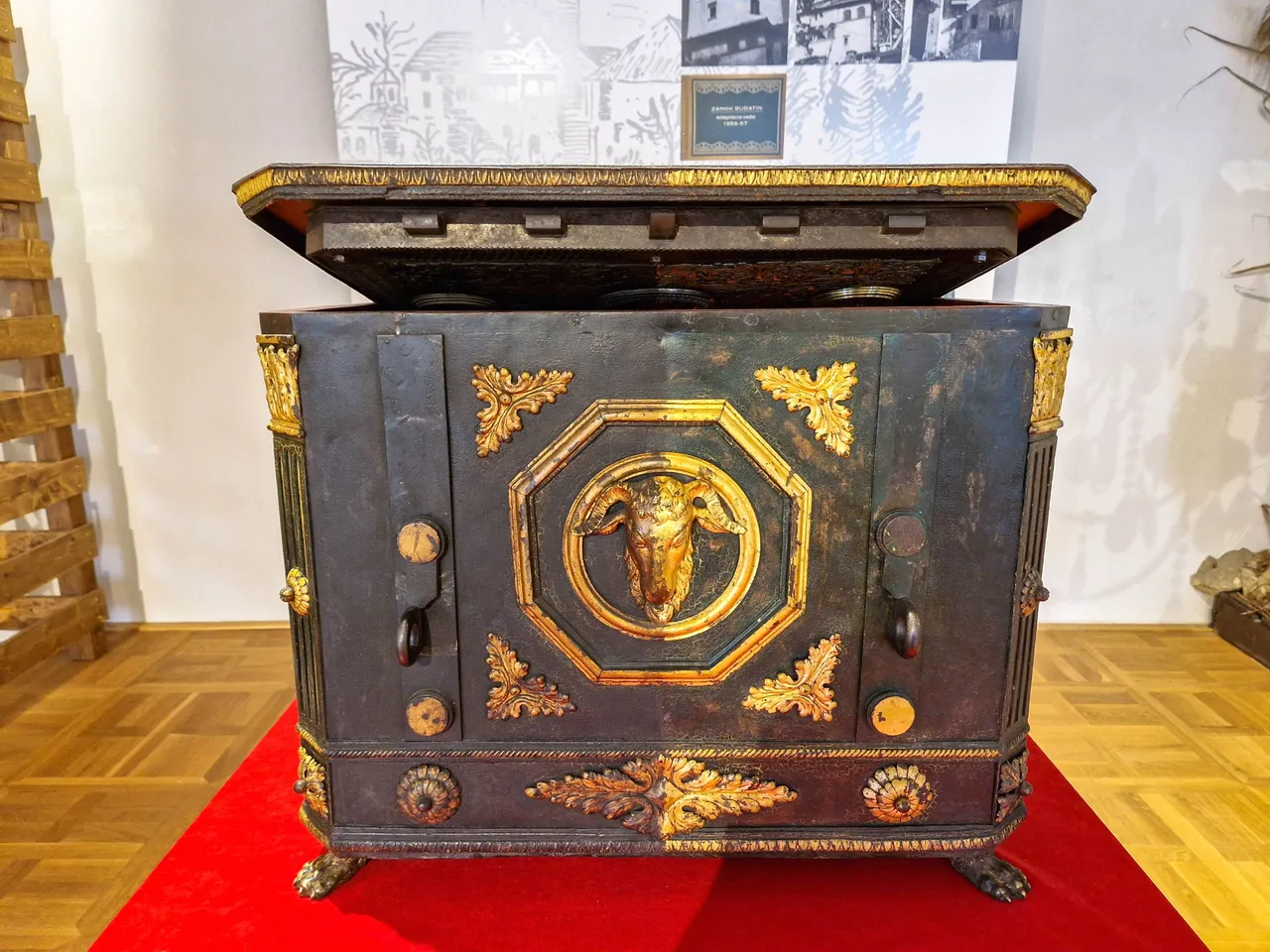
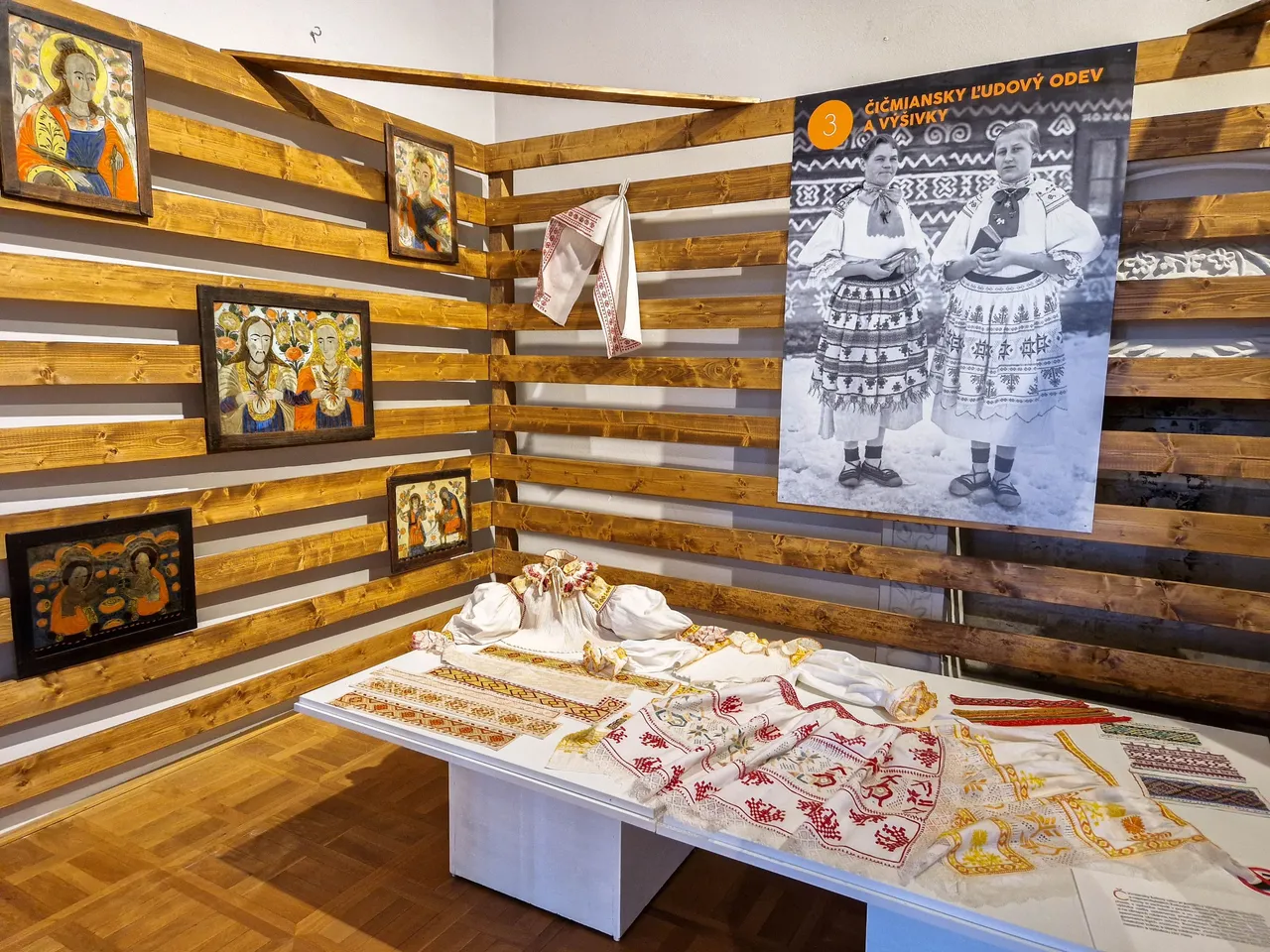
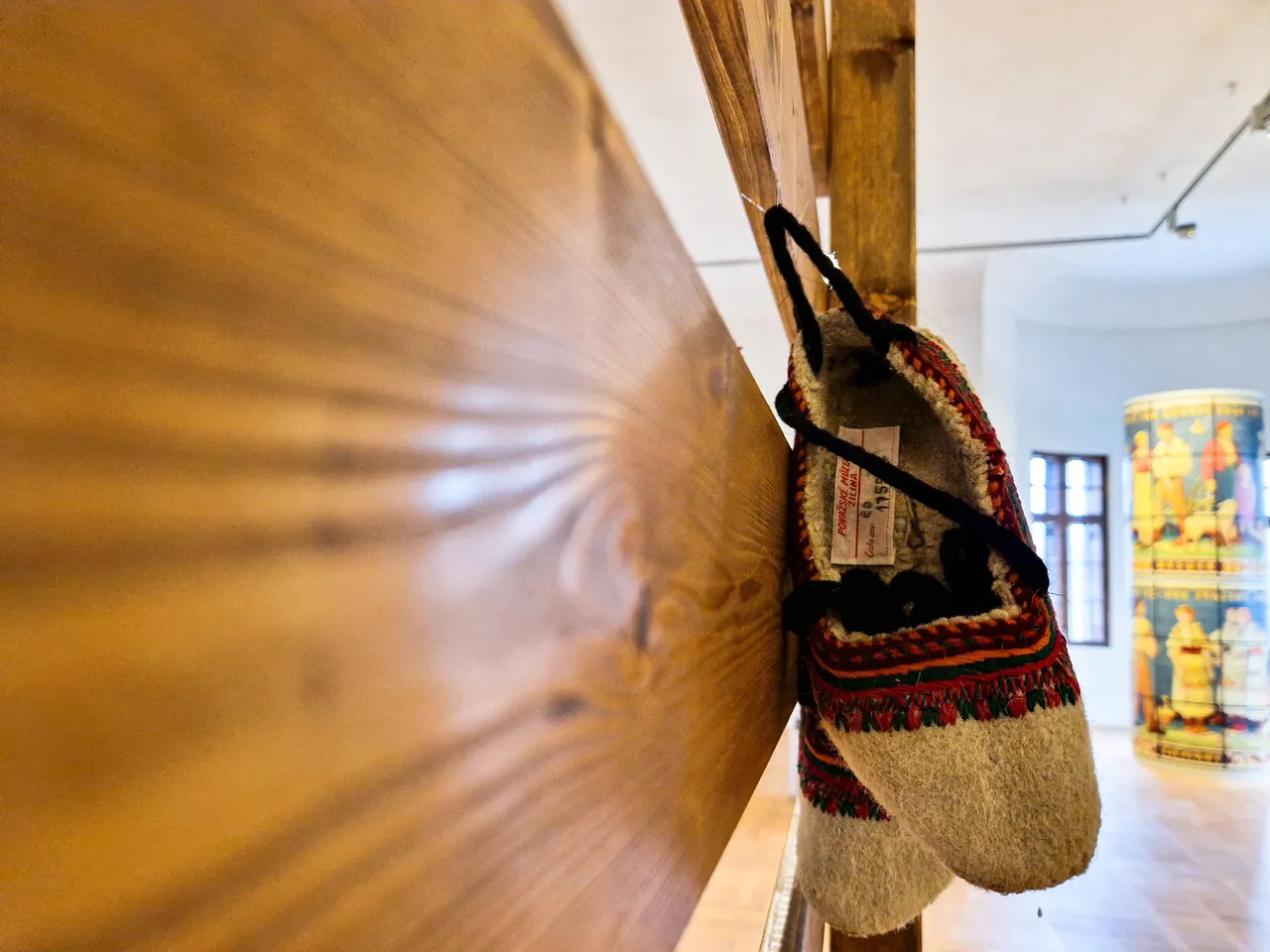
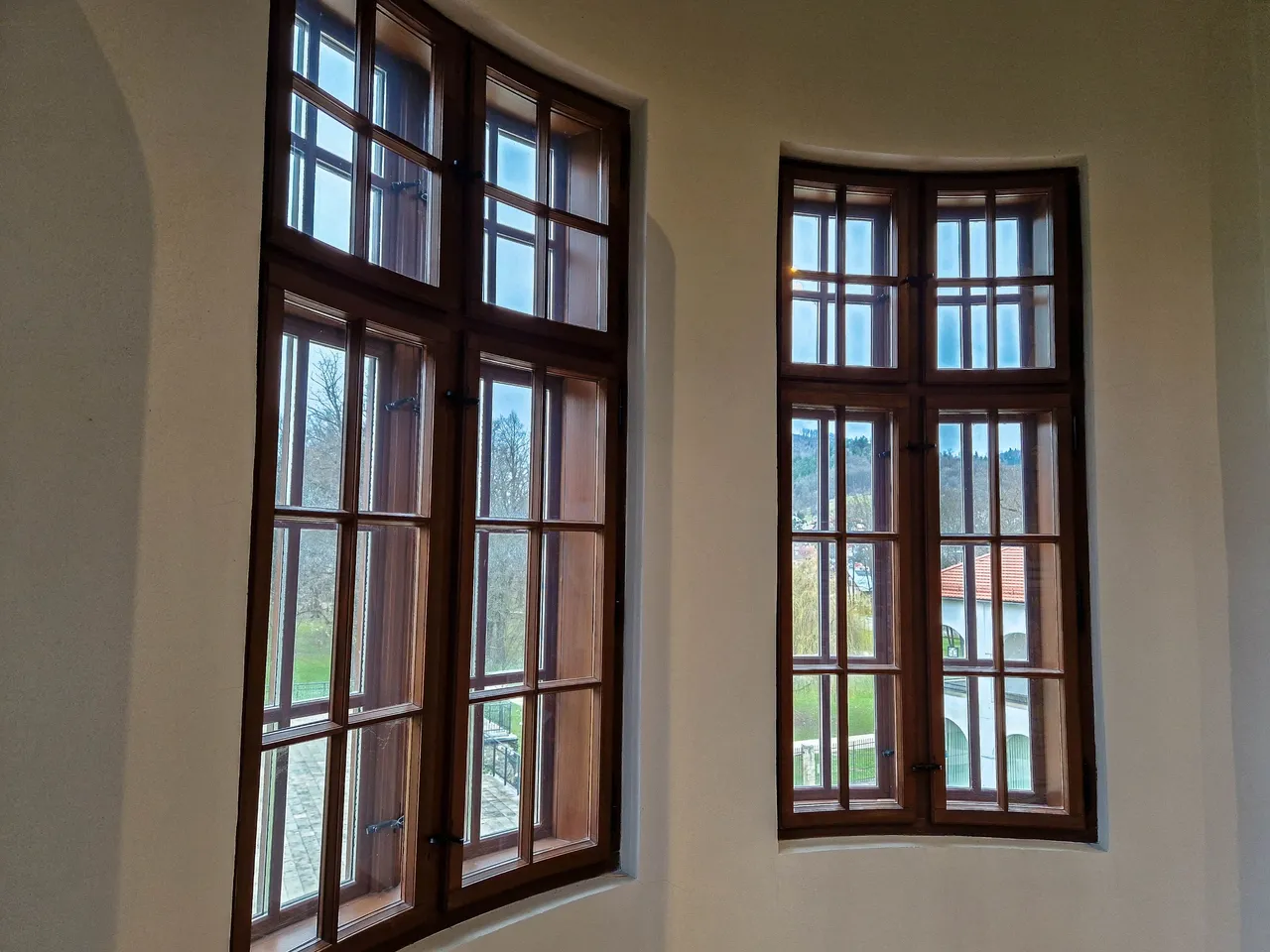
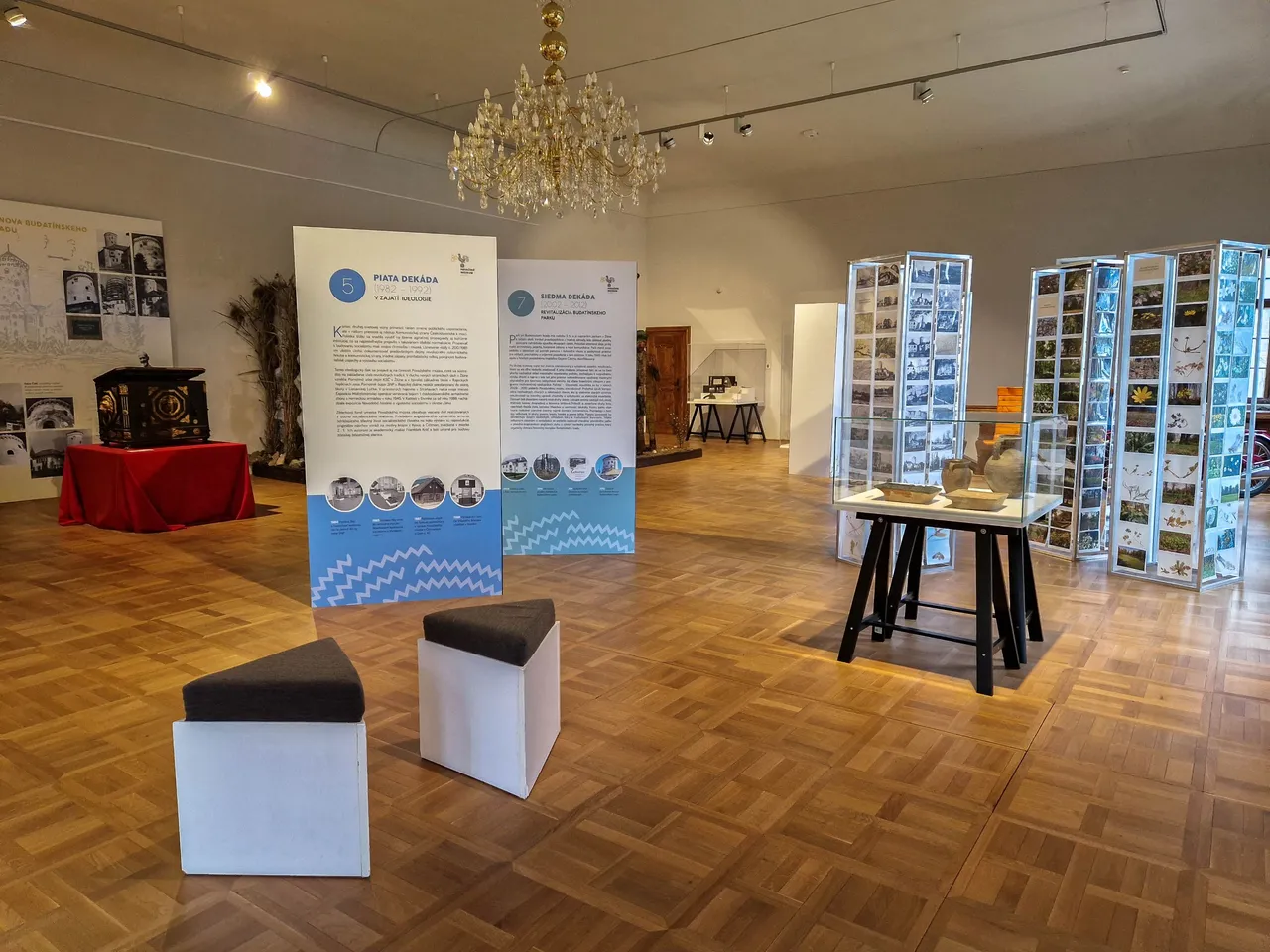
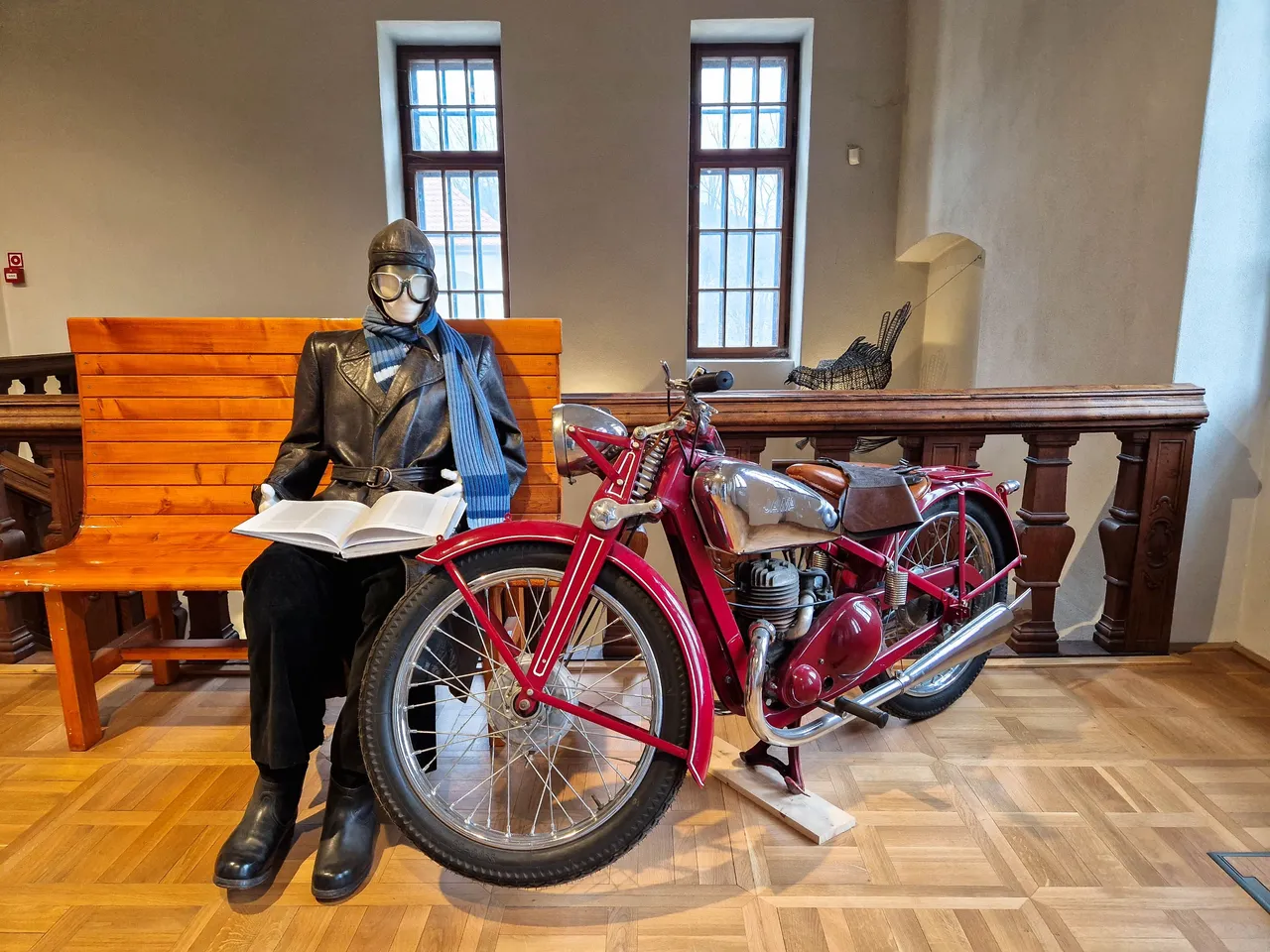
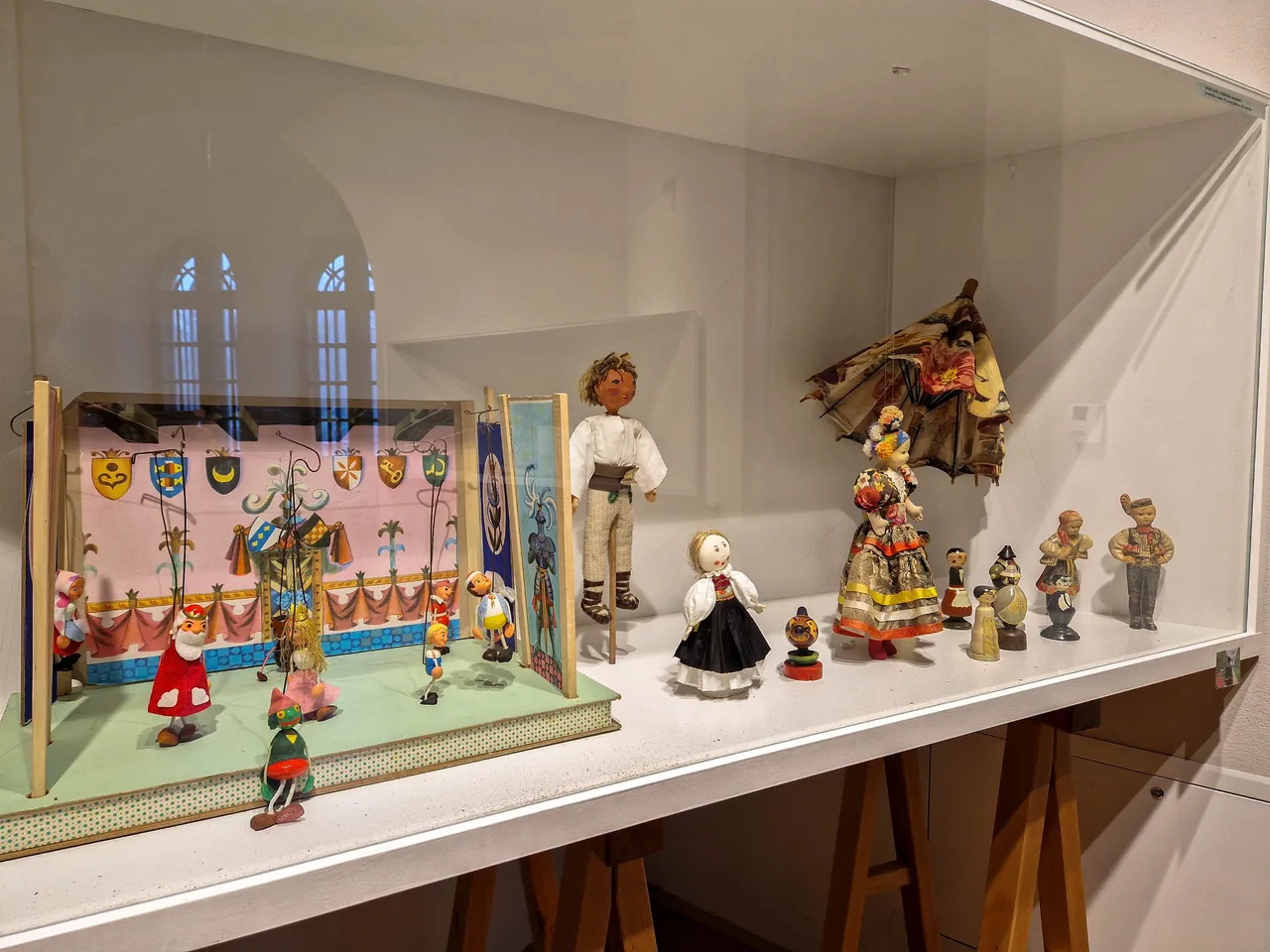
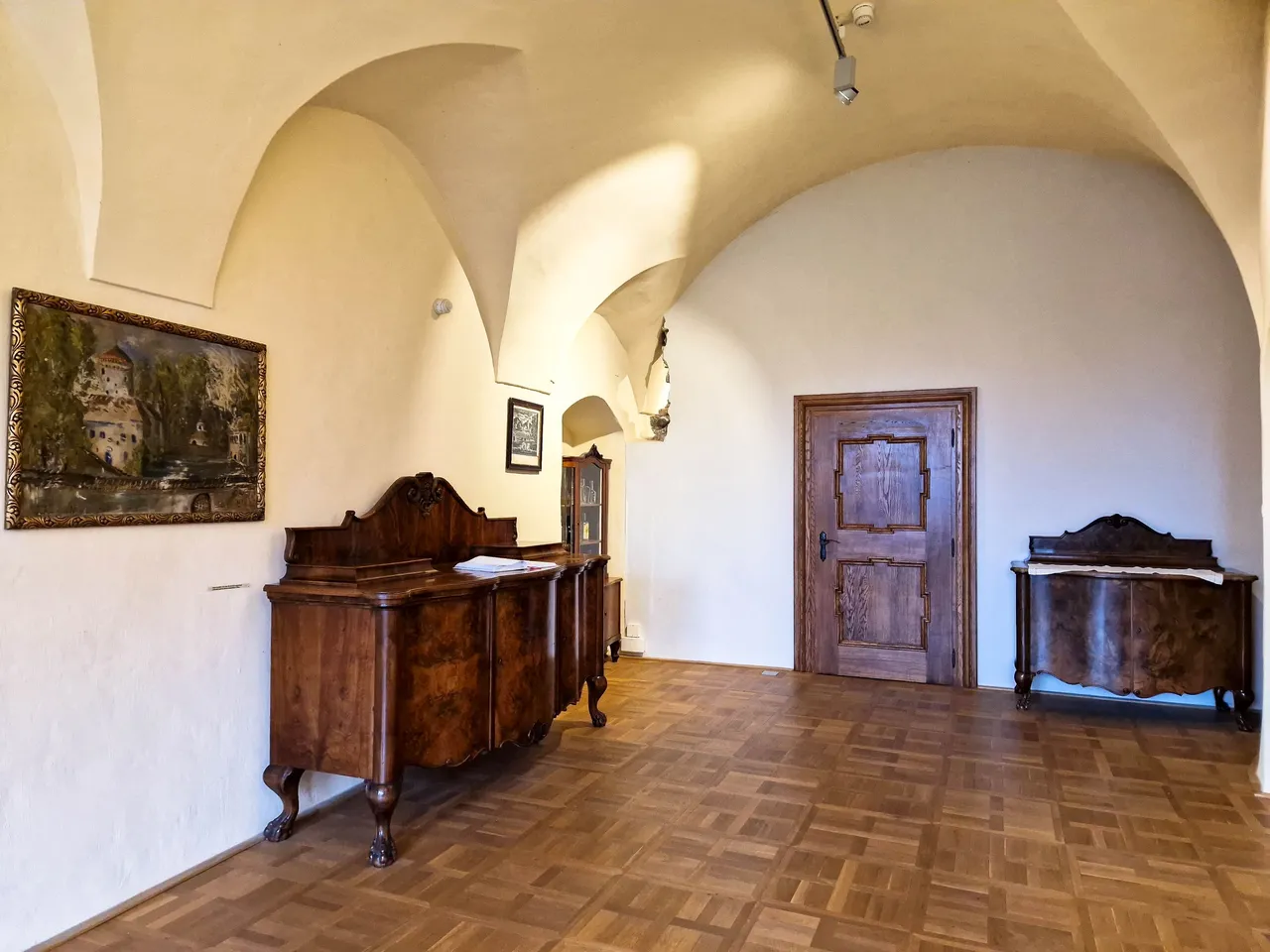
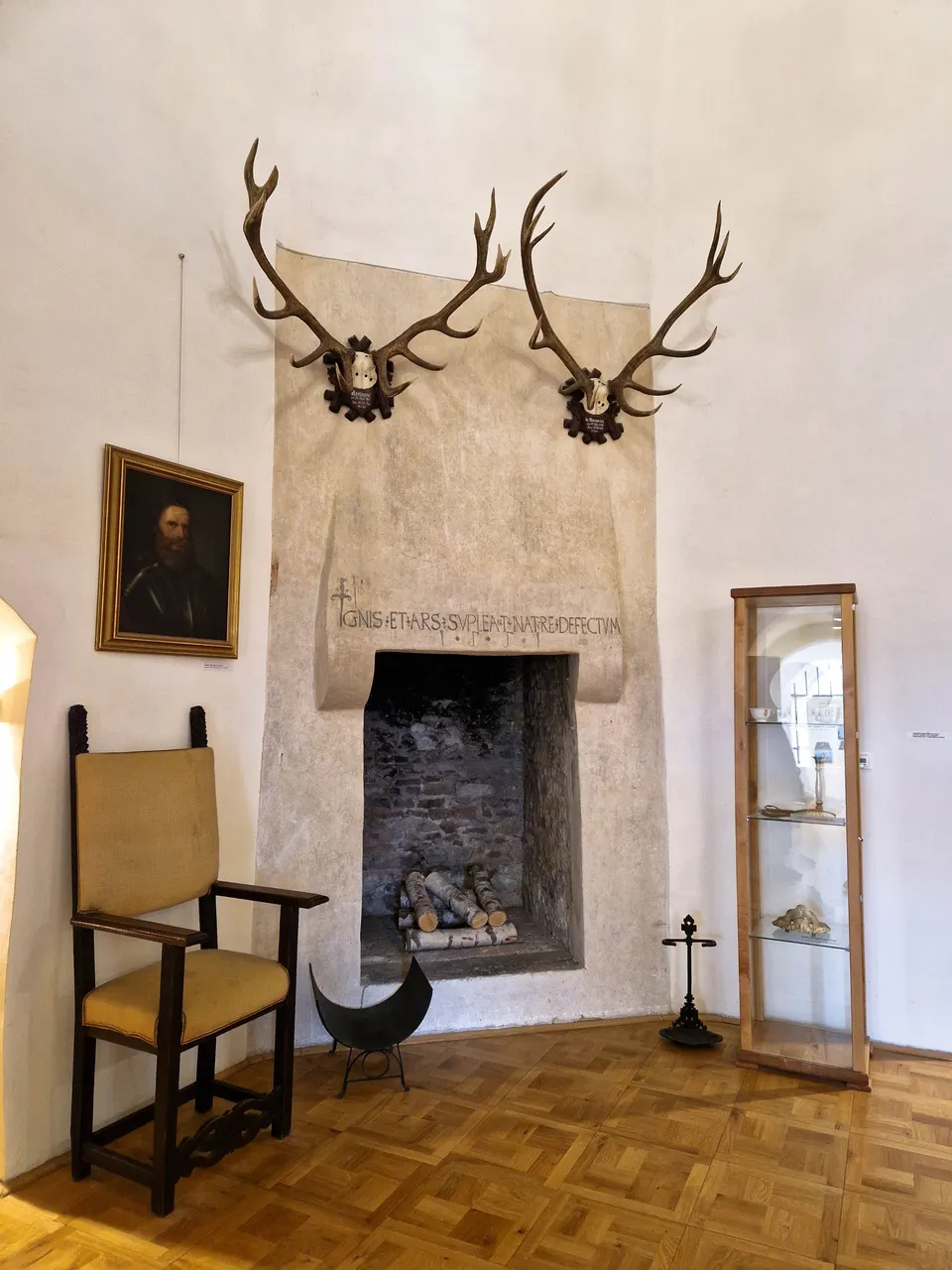
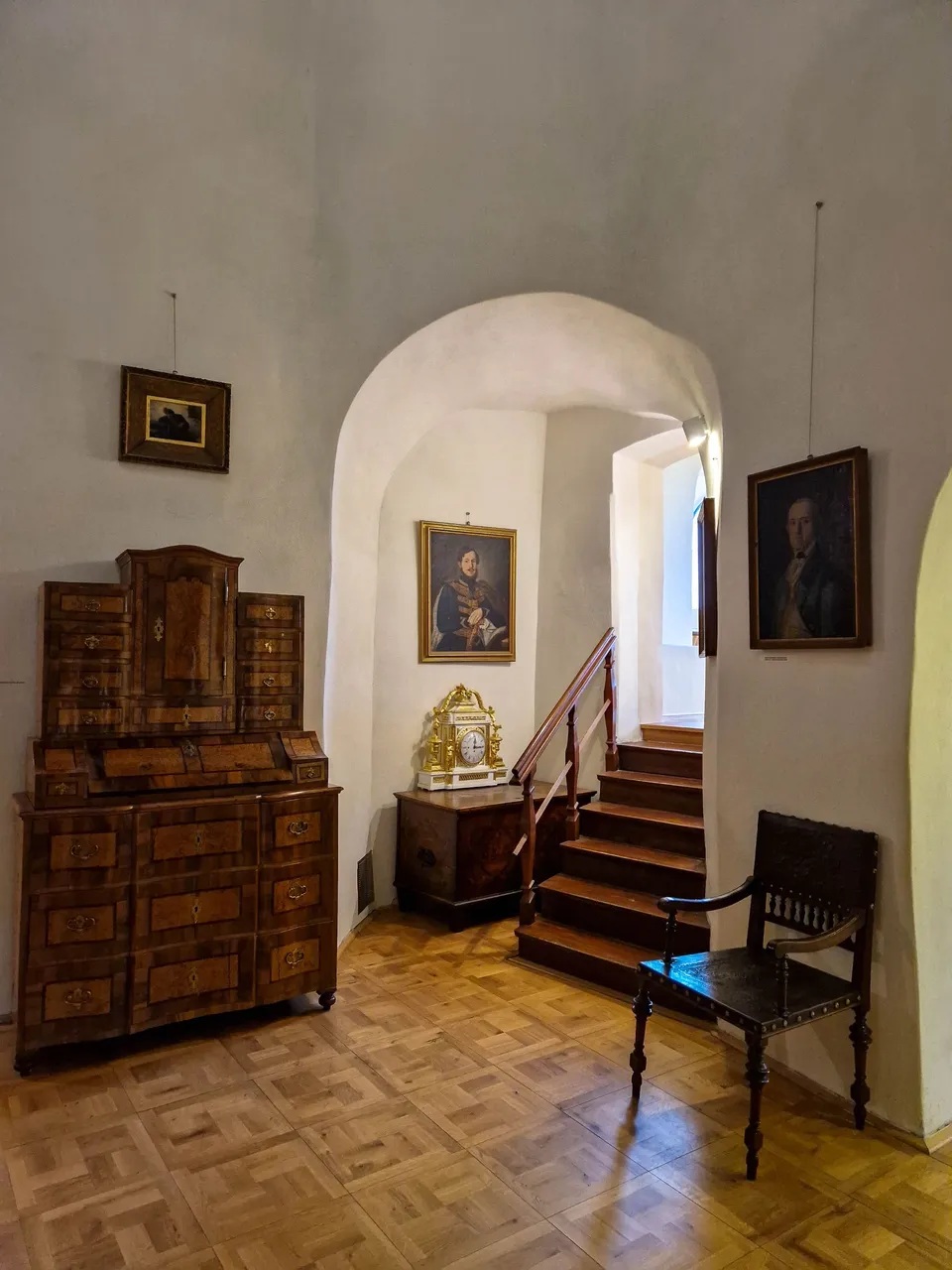
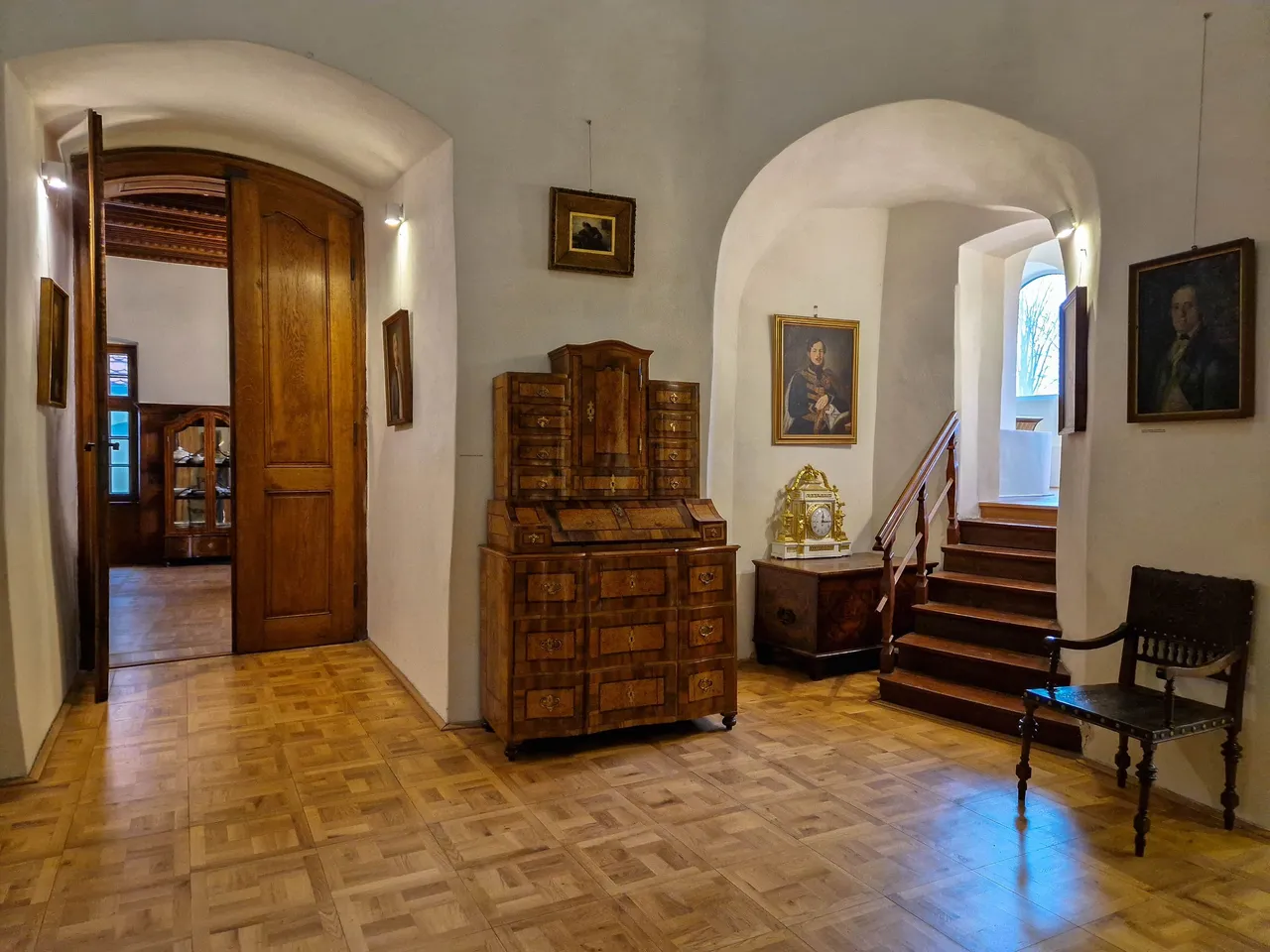
Before going to the tower, we visited the dining room. It's a beautifully decorated room with wooden plates placed on the walls. Apparently, it appeared in a few fairytales, but I have no idea which ones.

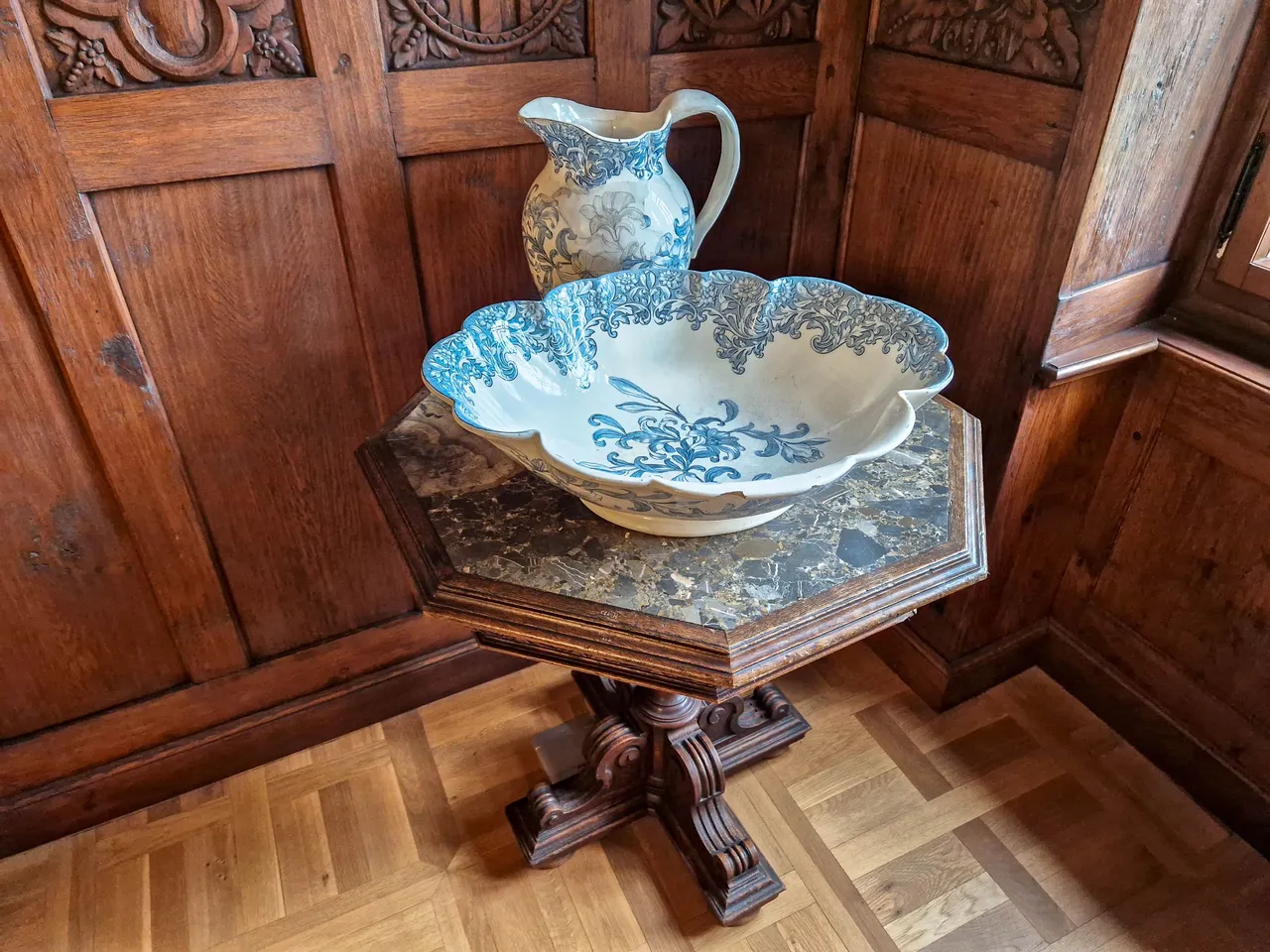
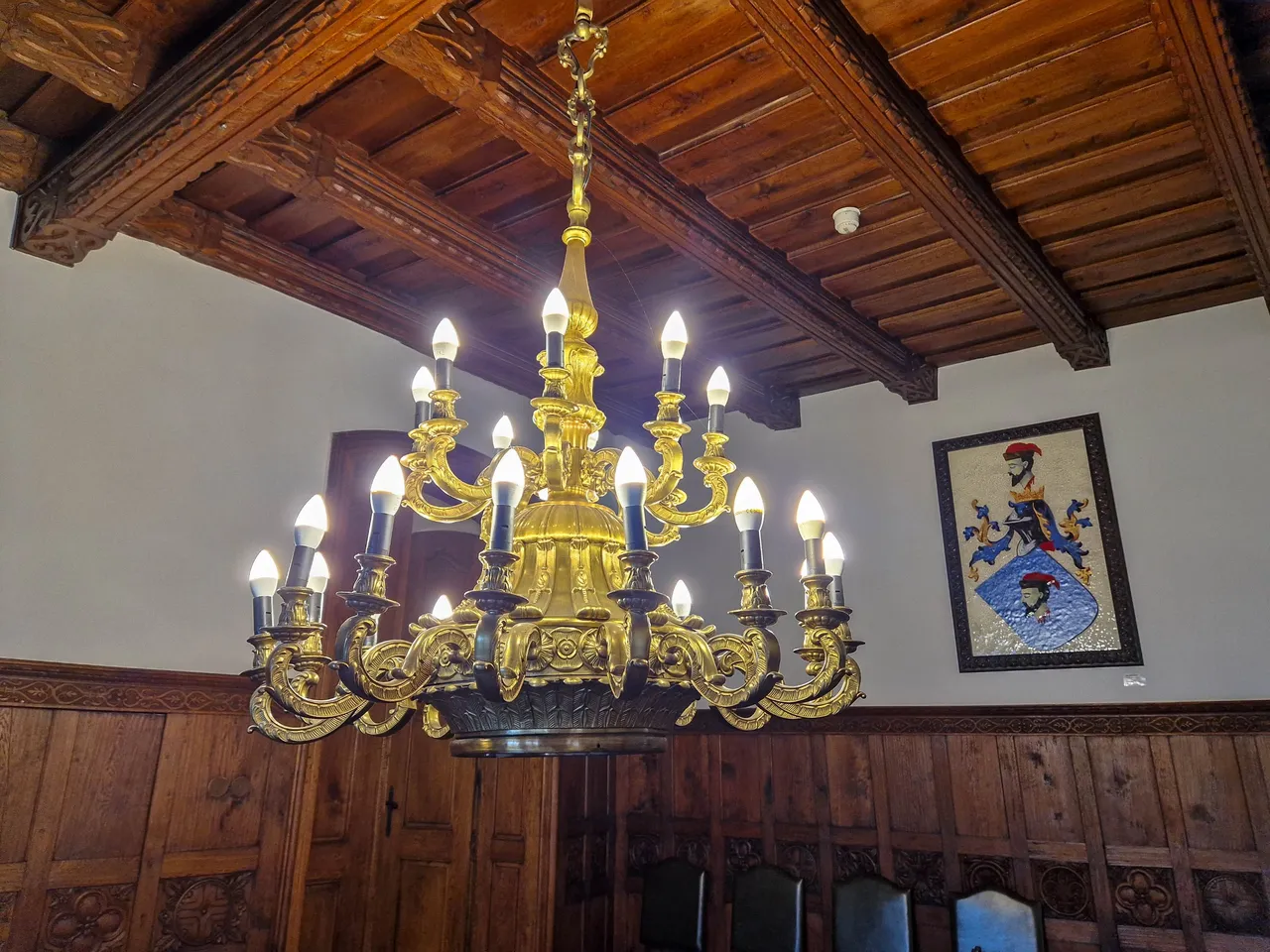
Let's move to the first floor of the tower. It is a large oval room with high ceilings. There was one more additional floor above this one, but it was destroyed, and this is why the ceiling is so high now. The entire space is much bigger than it looks from outside.
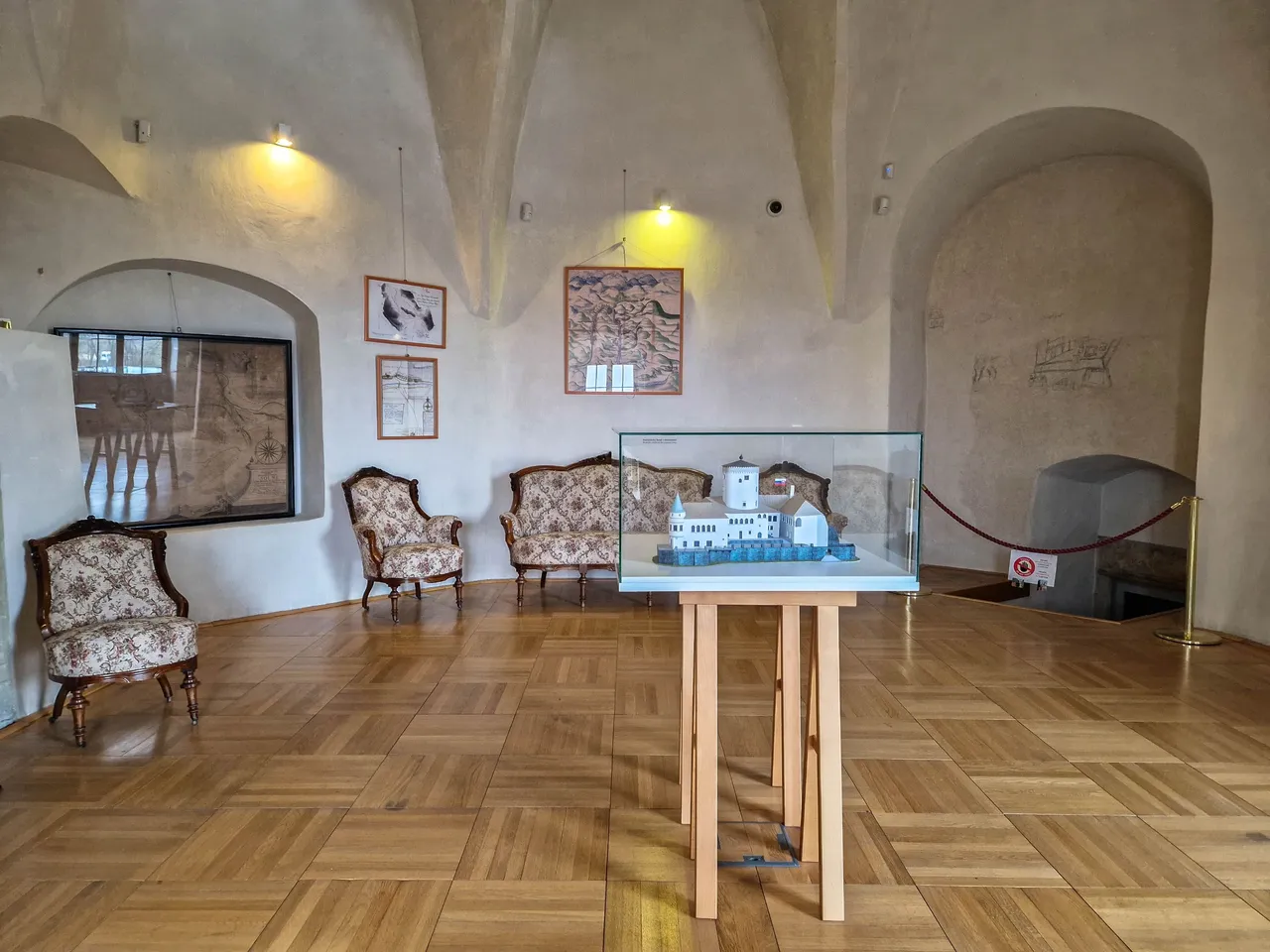
There is a hole in the ceiling where we could see another floor with its inside balcony.
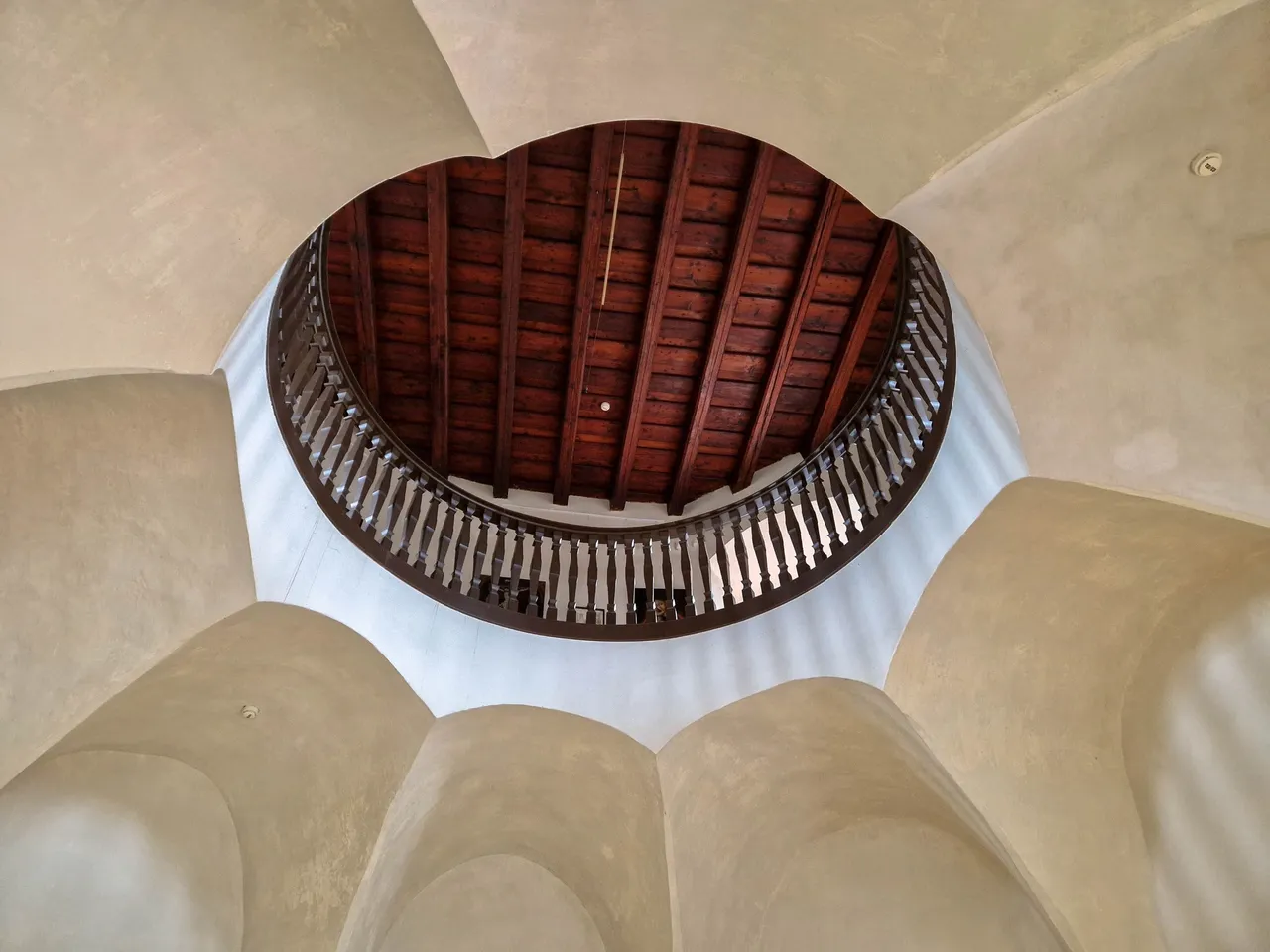
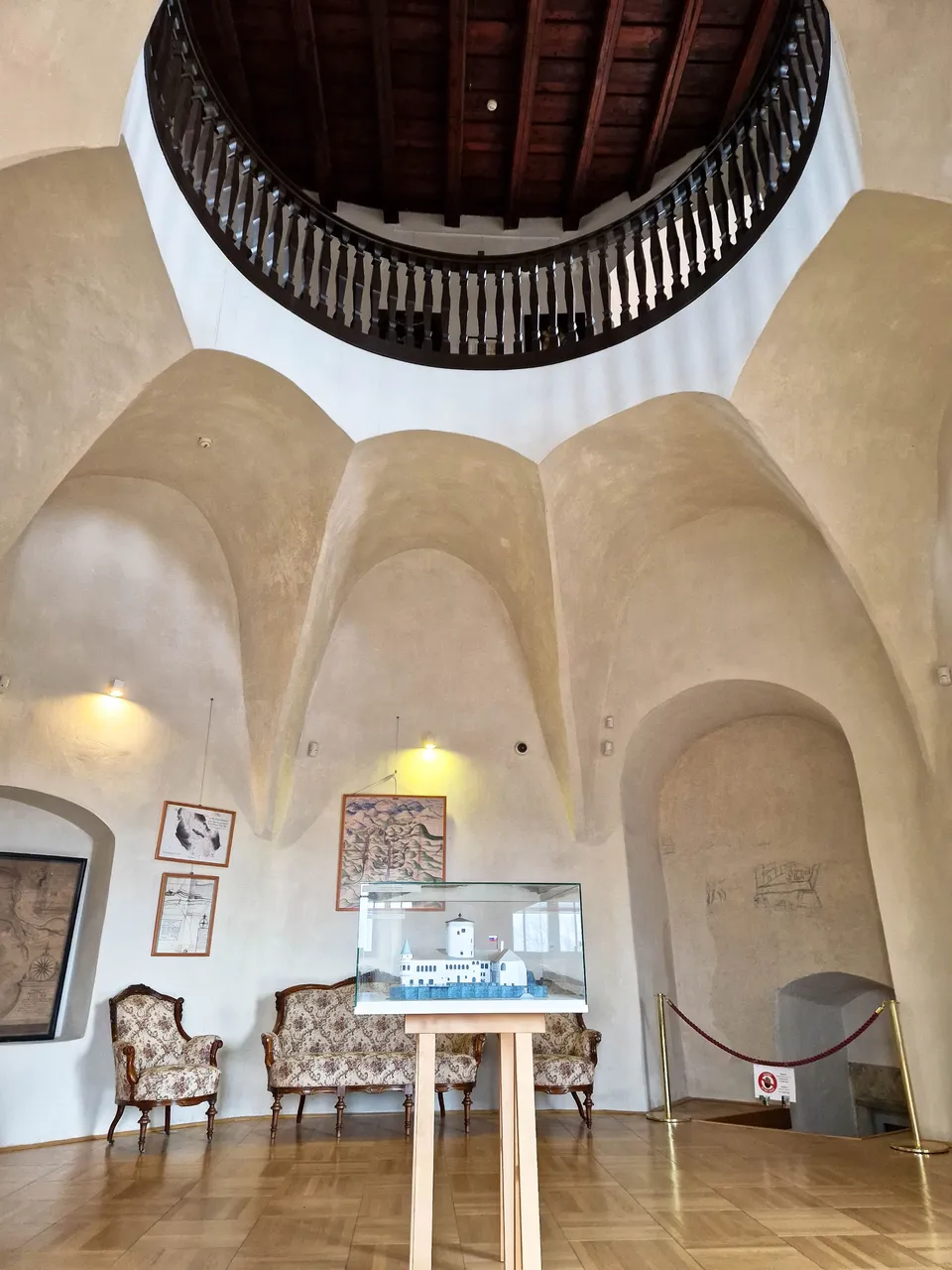

The map on the wall is a land map of Žilina from the 18th century.
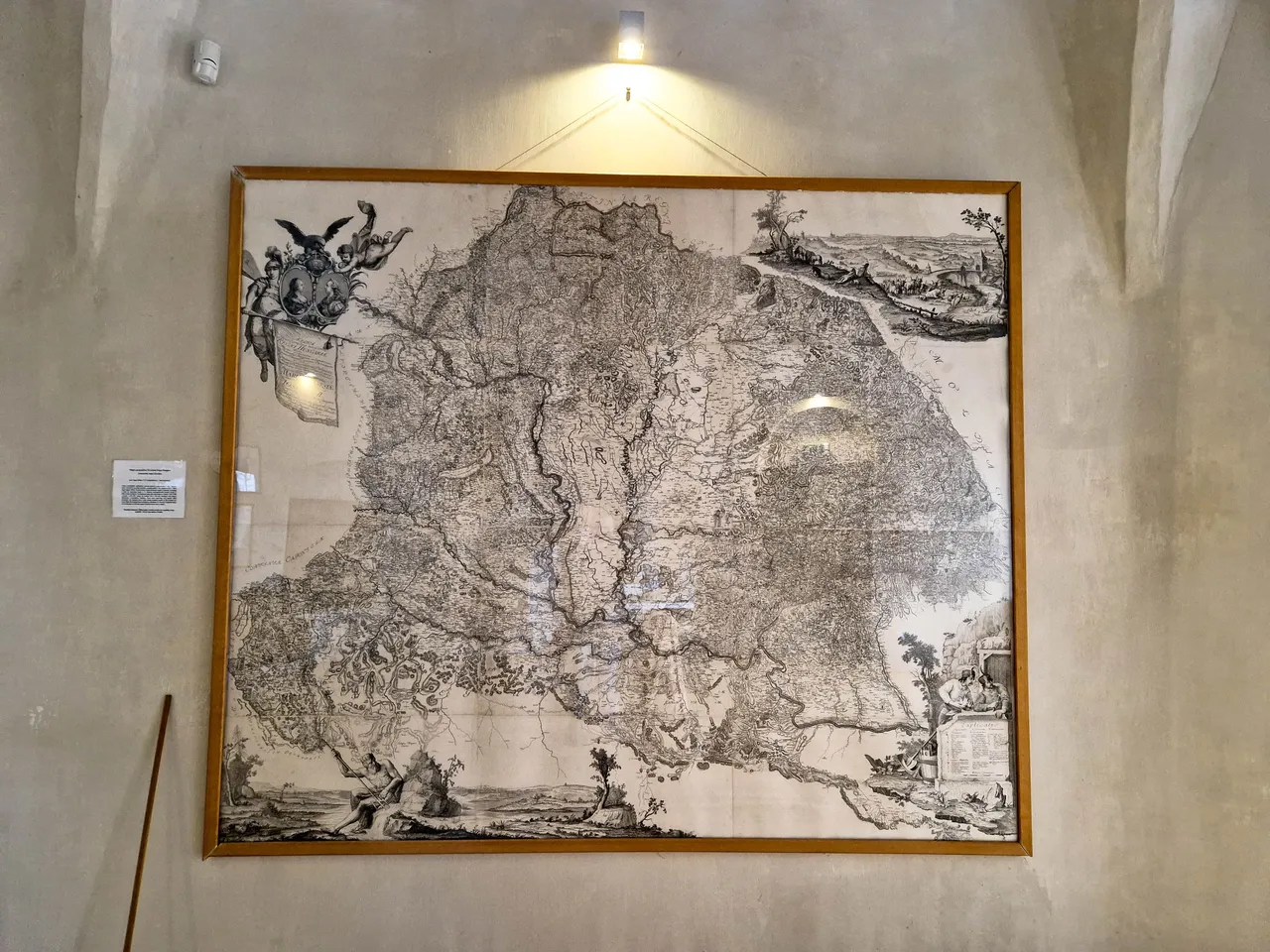
We were lucky that it was lunchtime as we could spend some time without guides. These guys were everywhere wanting to talk about such small details and rushing us through the rooms.
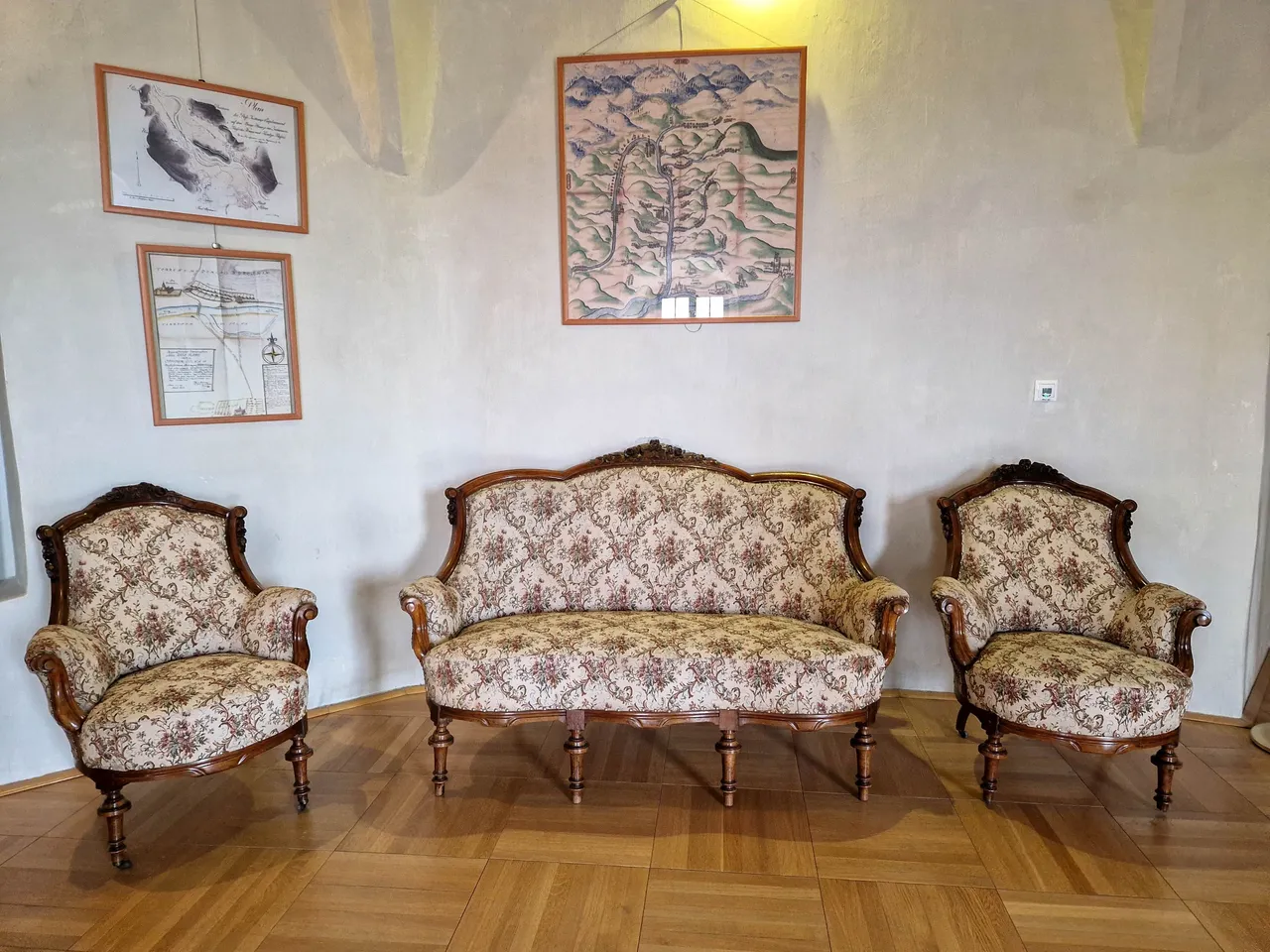
There is also a small model of the castle on this floor.
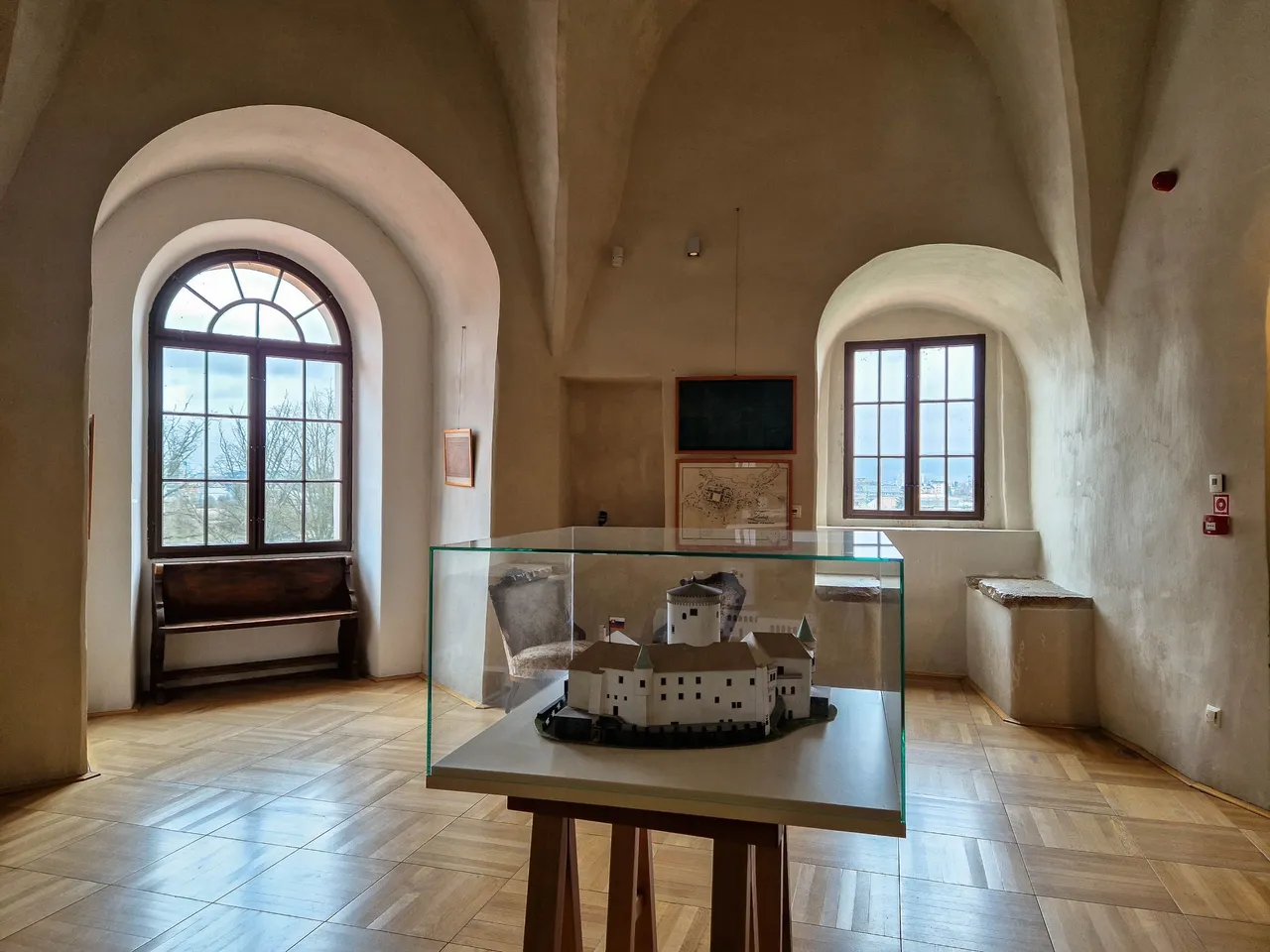
When you look closer you will see a tiny Slovak flag 🙂

This was my favorite room as I really liked the ceiling. Let's see what we will find one floor up...
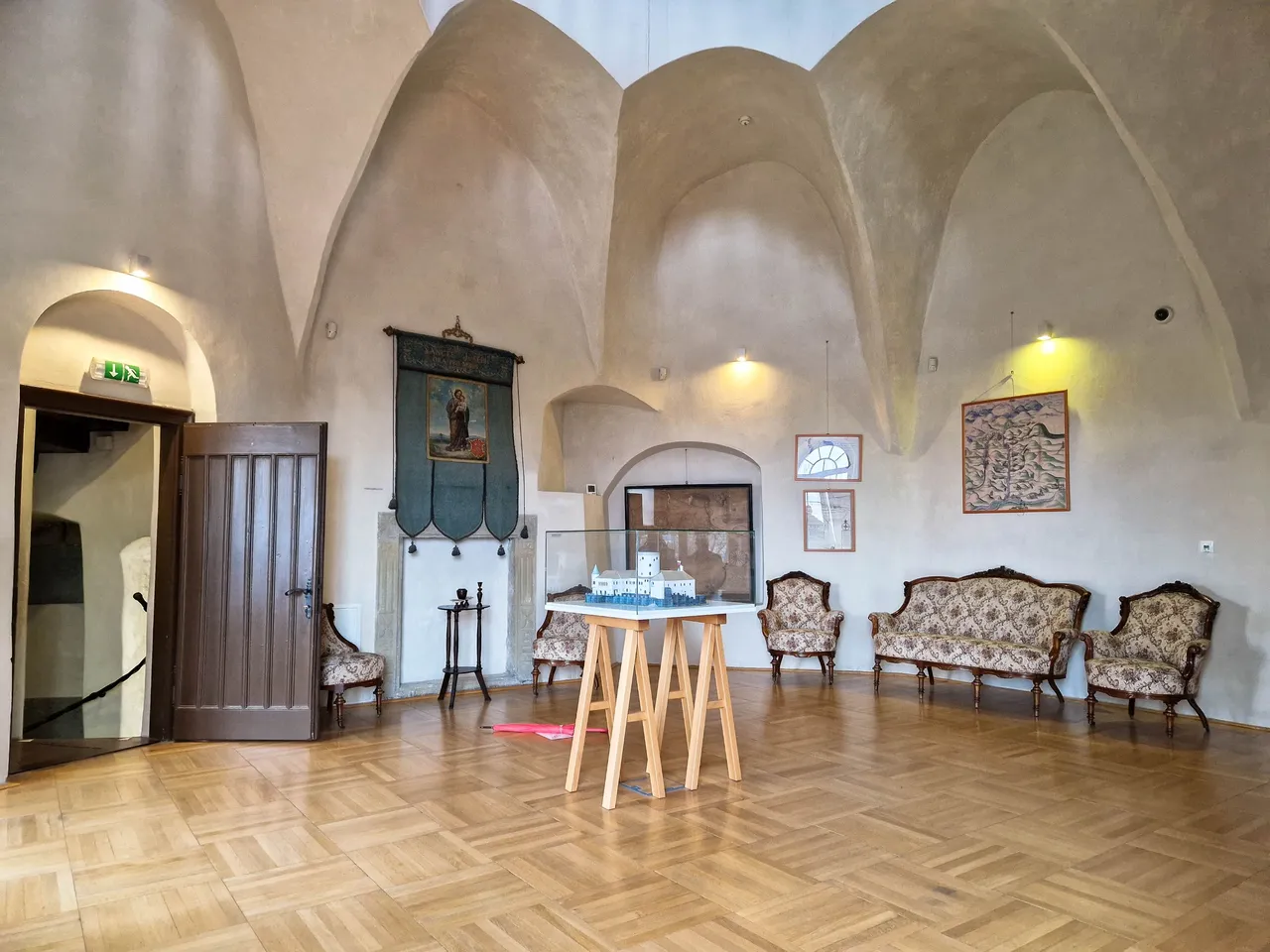
In the past, this room was used as big library. Today, it's more of a picture gallery with oldest picture dating back to the 16th century.
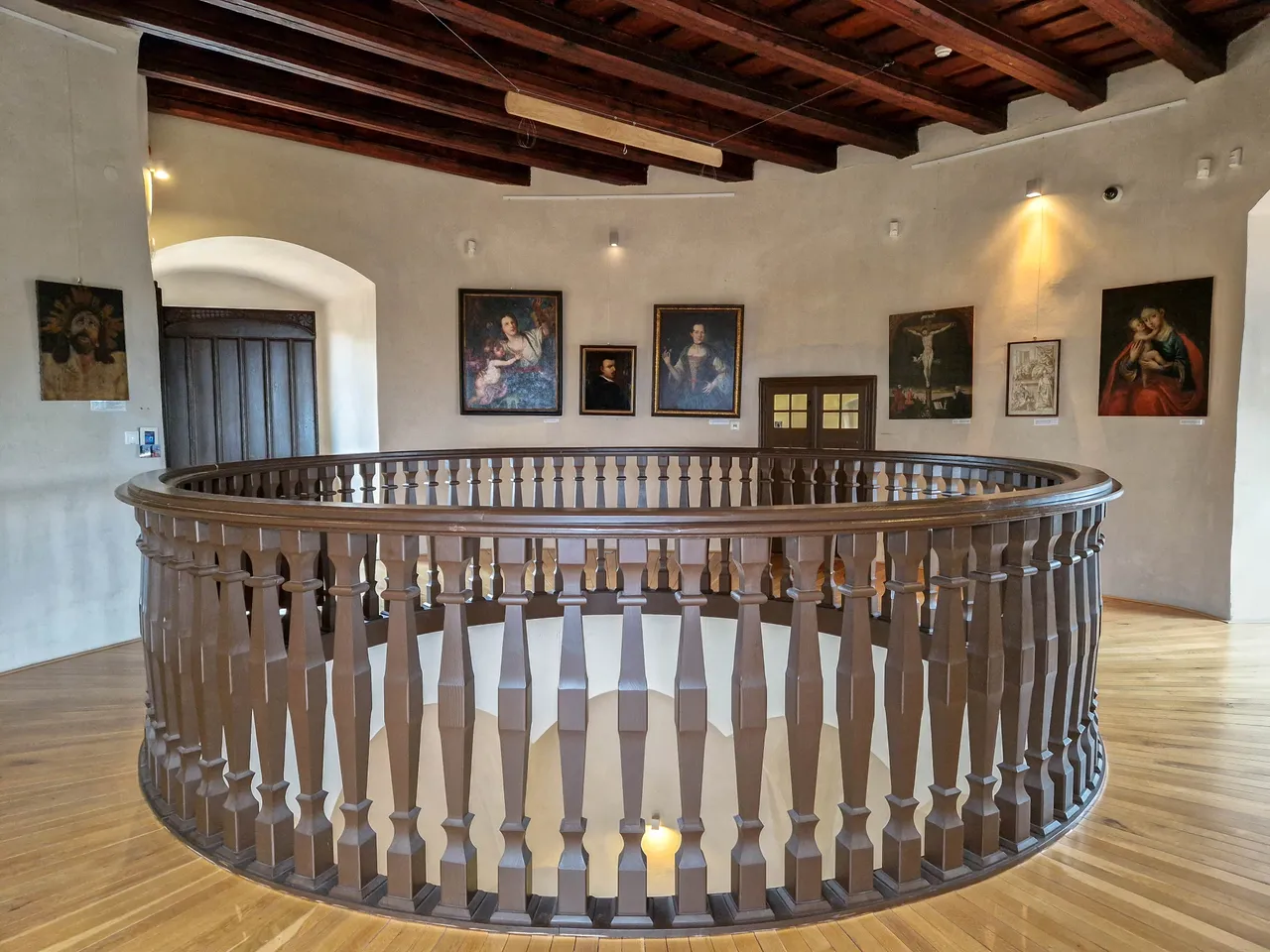
When you look down from the balcony you will get a view of the room below. It's such an interesting construction.
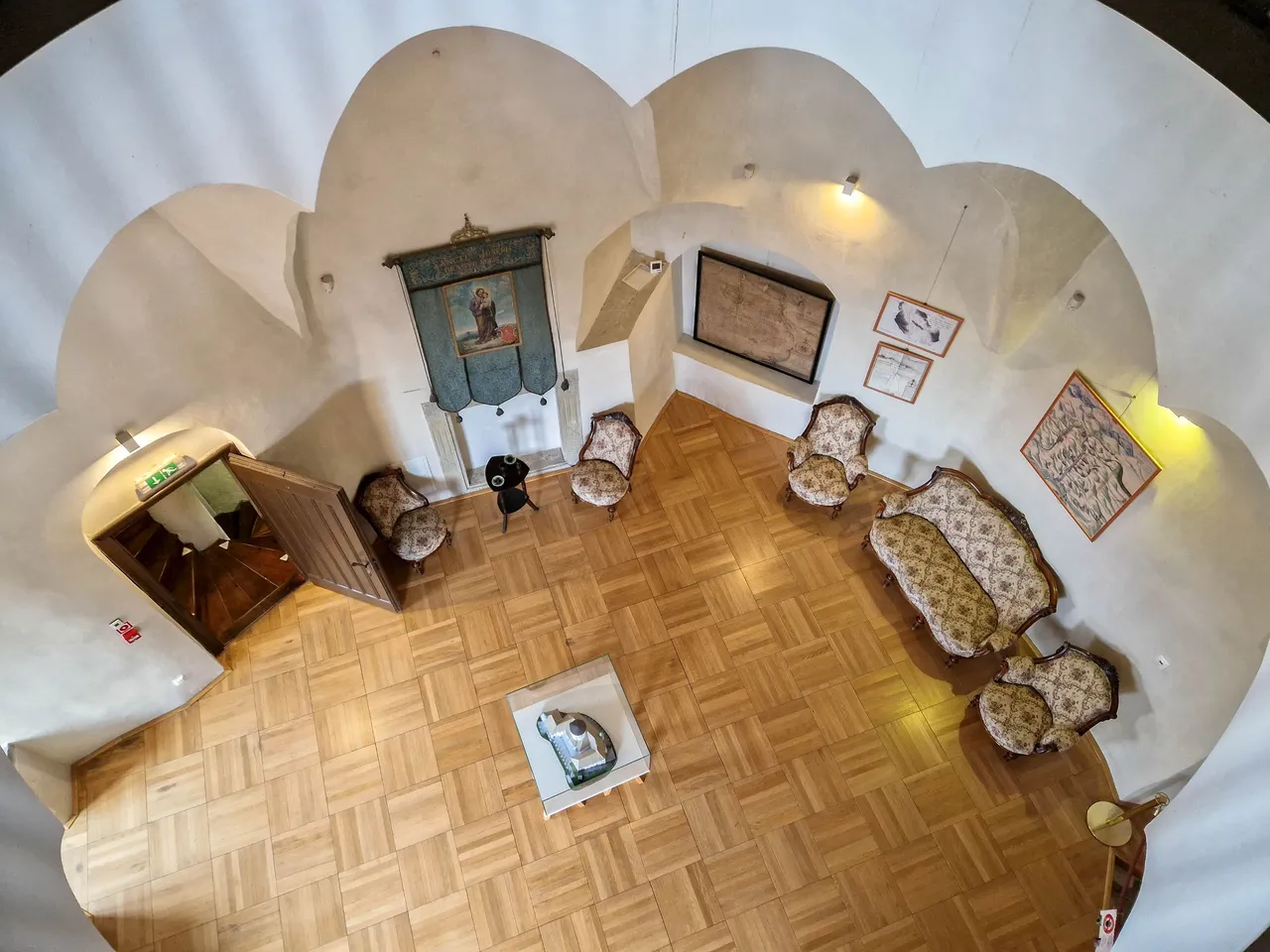
There is one more floor to see and on the way we spotted another Slovak flag. It was windy and it took me many attempts to get the flag this straight.
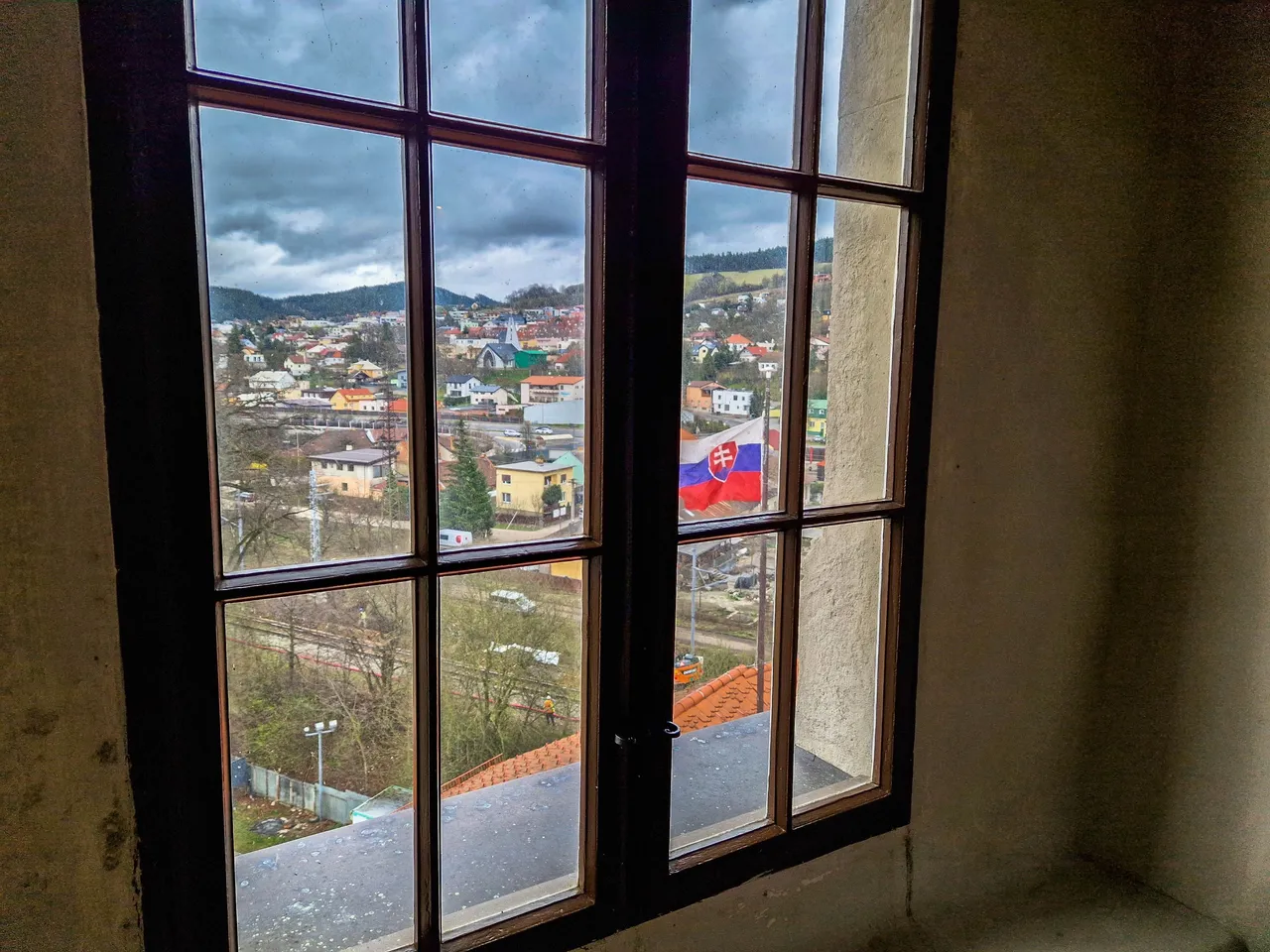

The last room of the exposition features historical clocks. The mechanism in the middle doesn't work anymore as the tower clock works on electricity. It is the original mechanism which was placed here in the past as well.
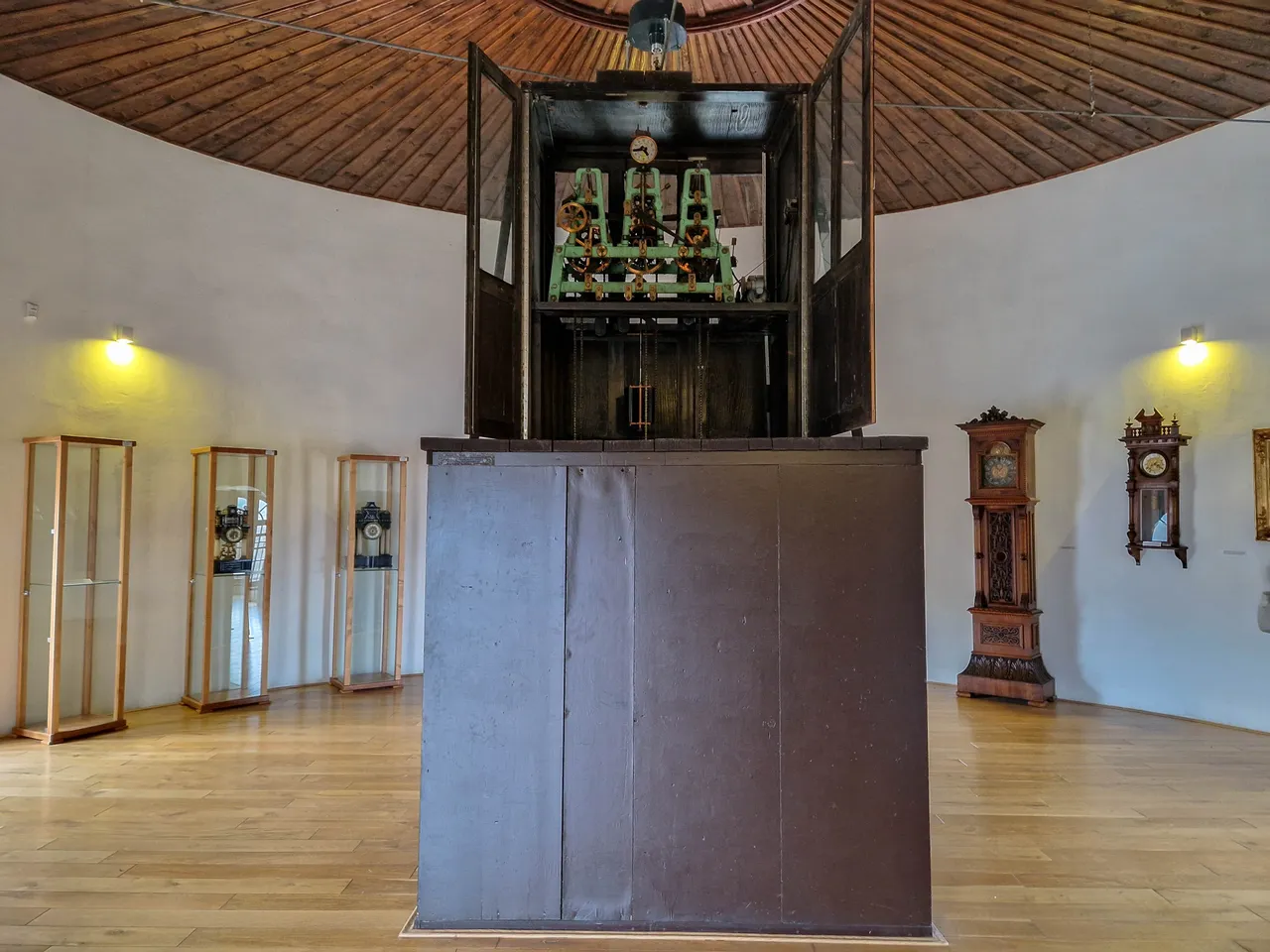
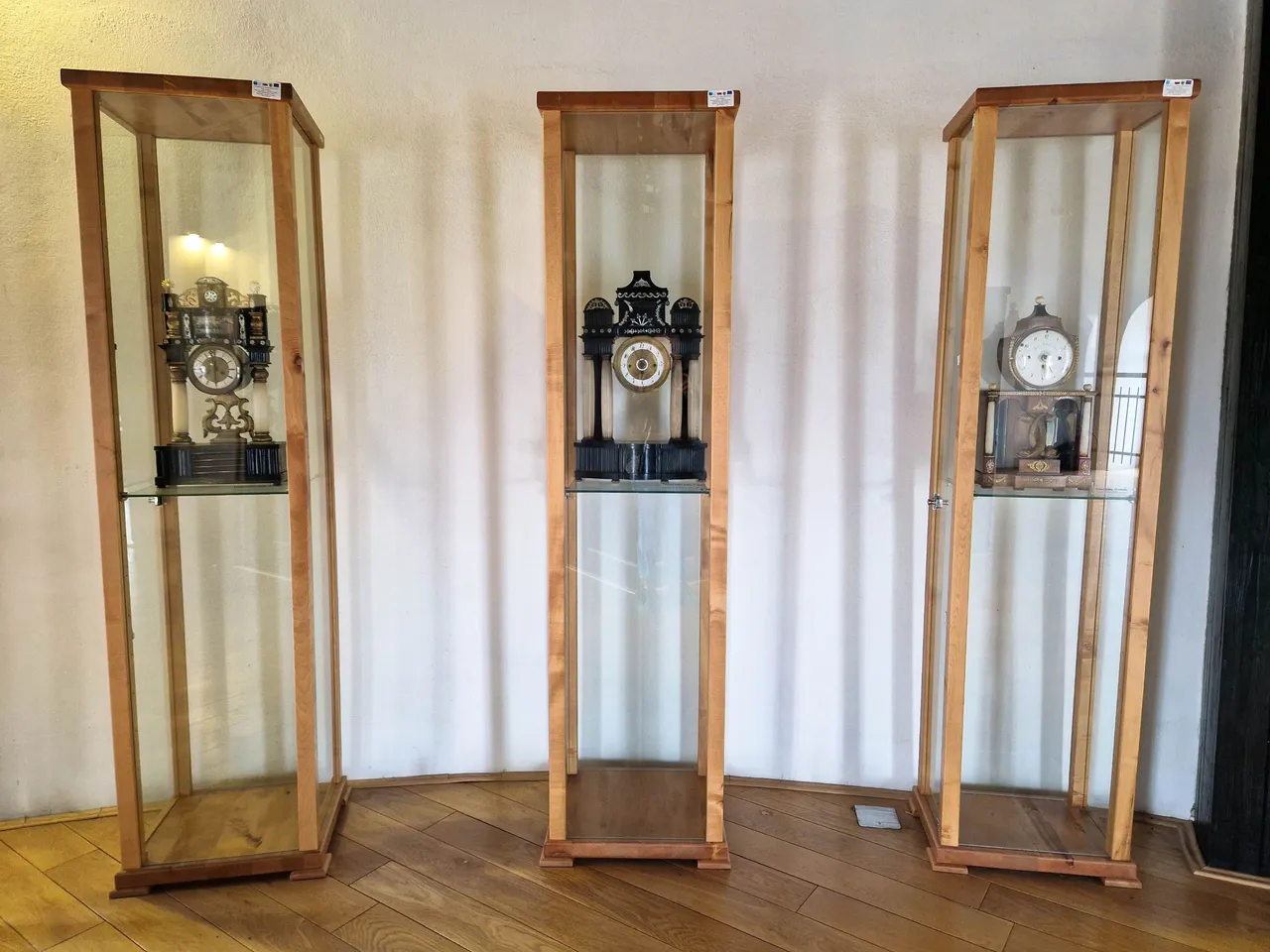
When we finished our tour we walked back to the car as we had about 5 hours drive ahead of us.
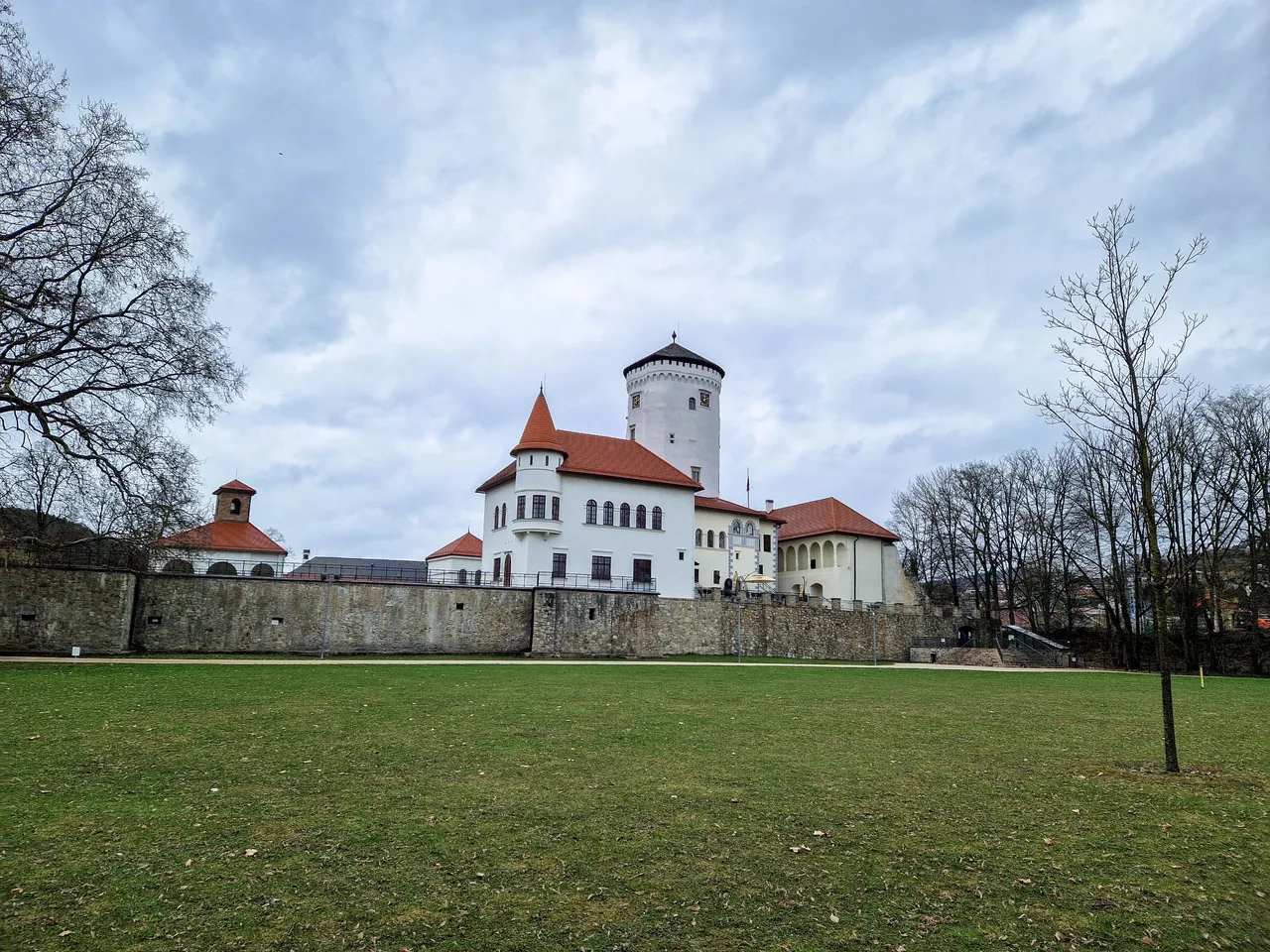
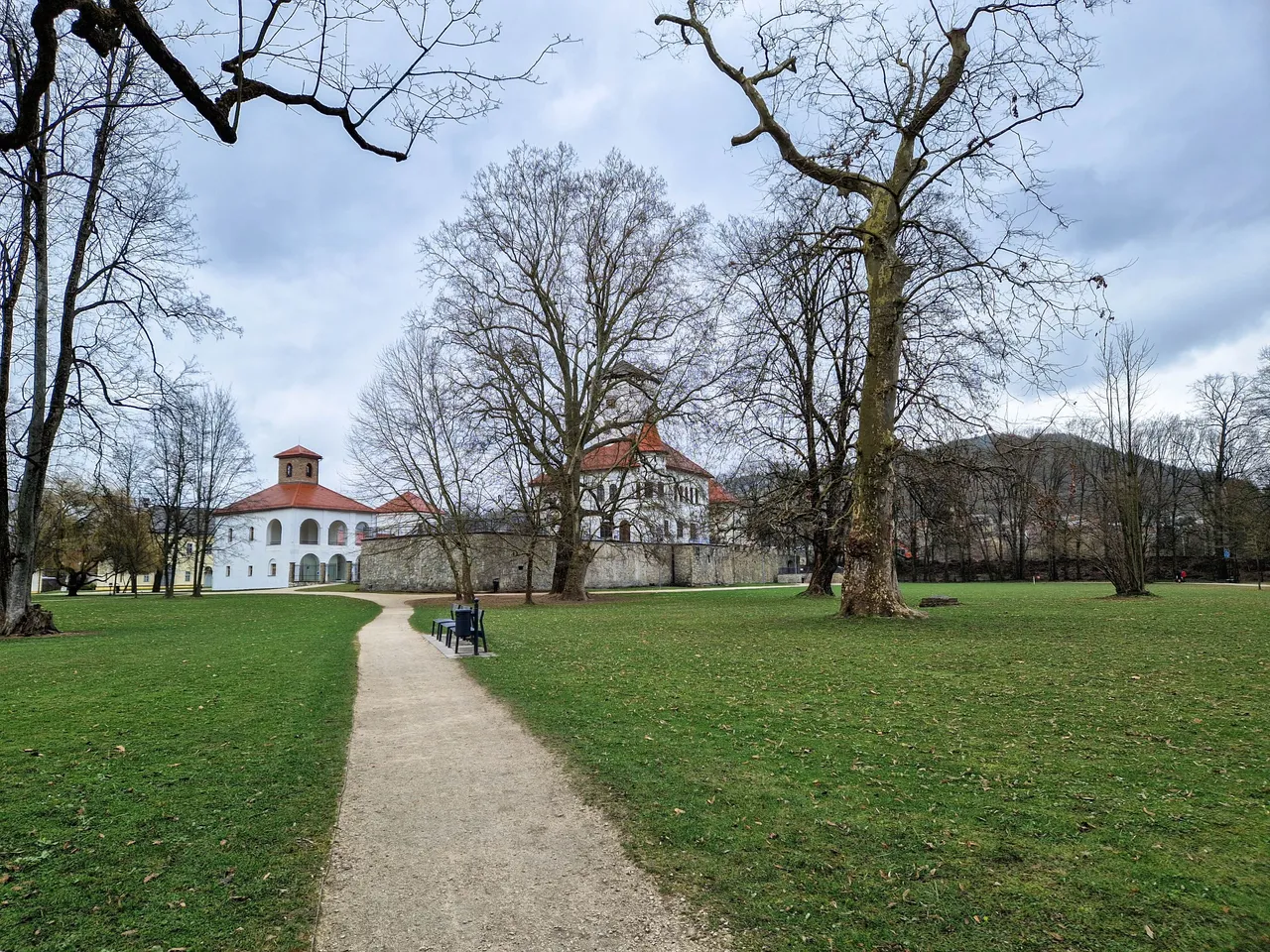

I was actually glad that it kept raining as I could walk around with my favorite umbrella 🙂
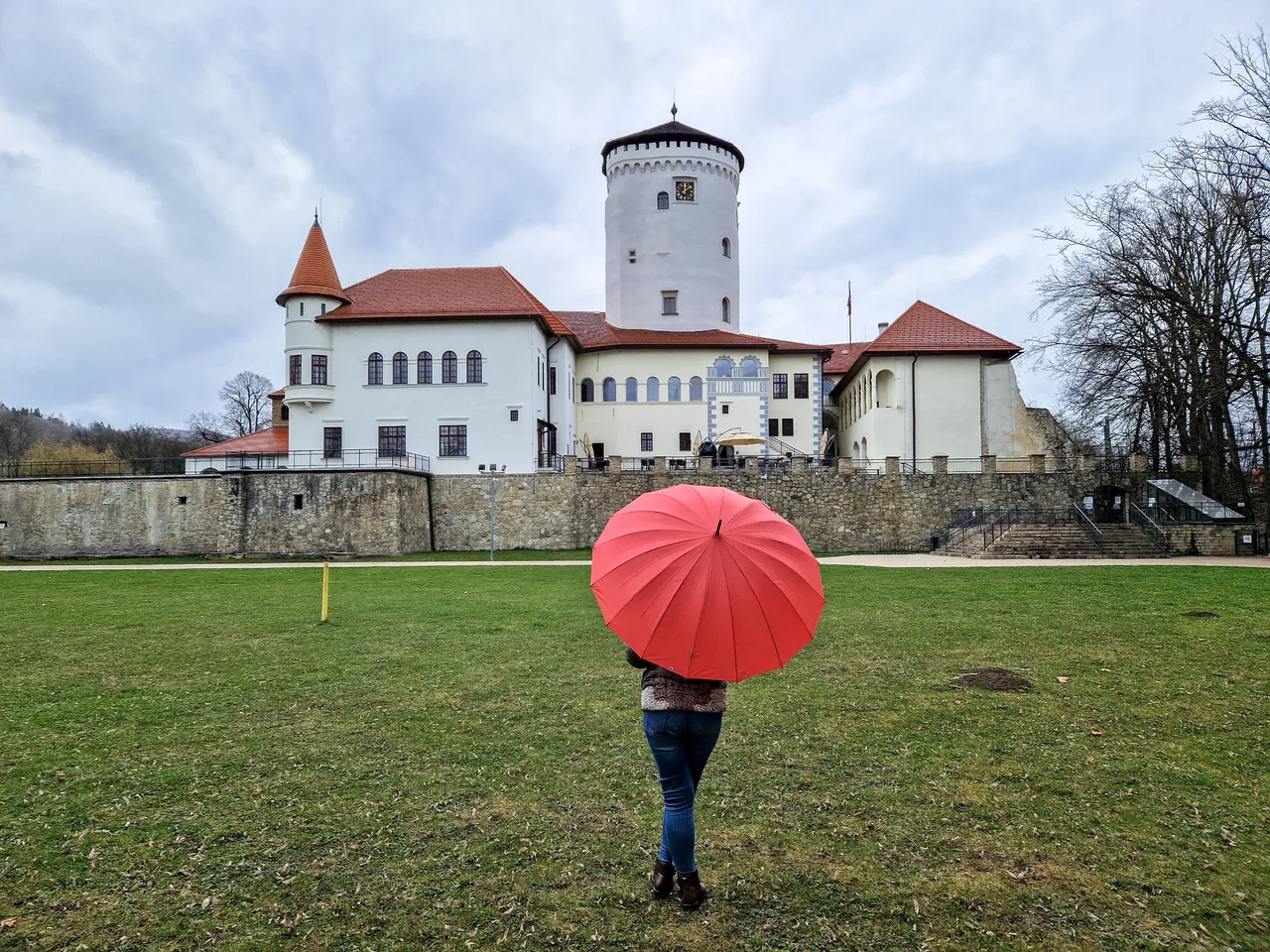
Luckily, there were no issues on the road and we came home in time for dinner with plenty of time to spend with our family.
Thank you for reading!
Cheers,
Martina